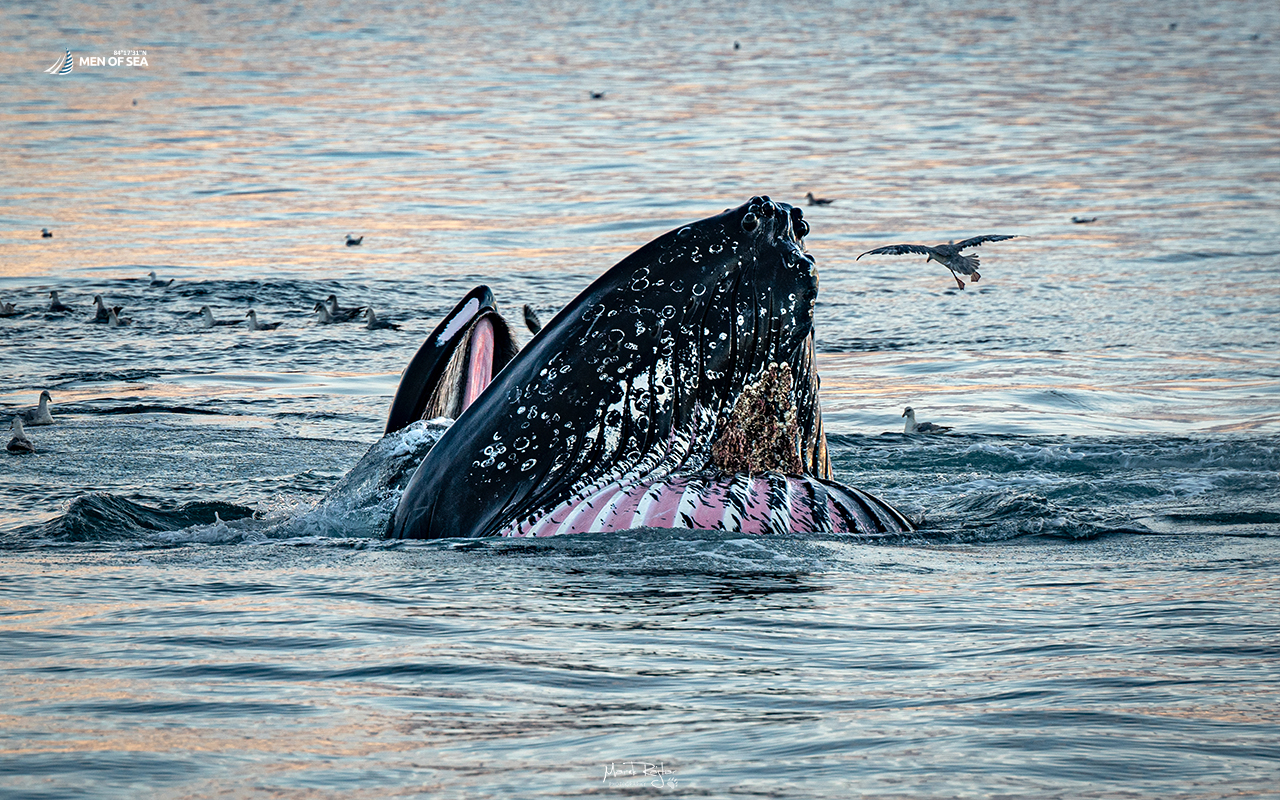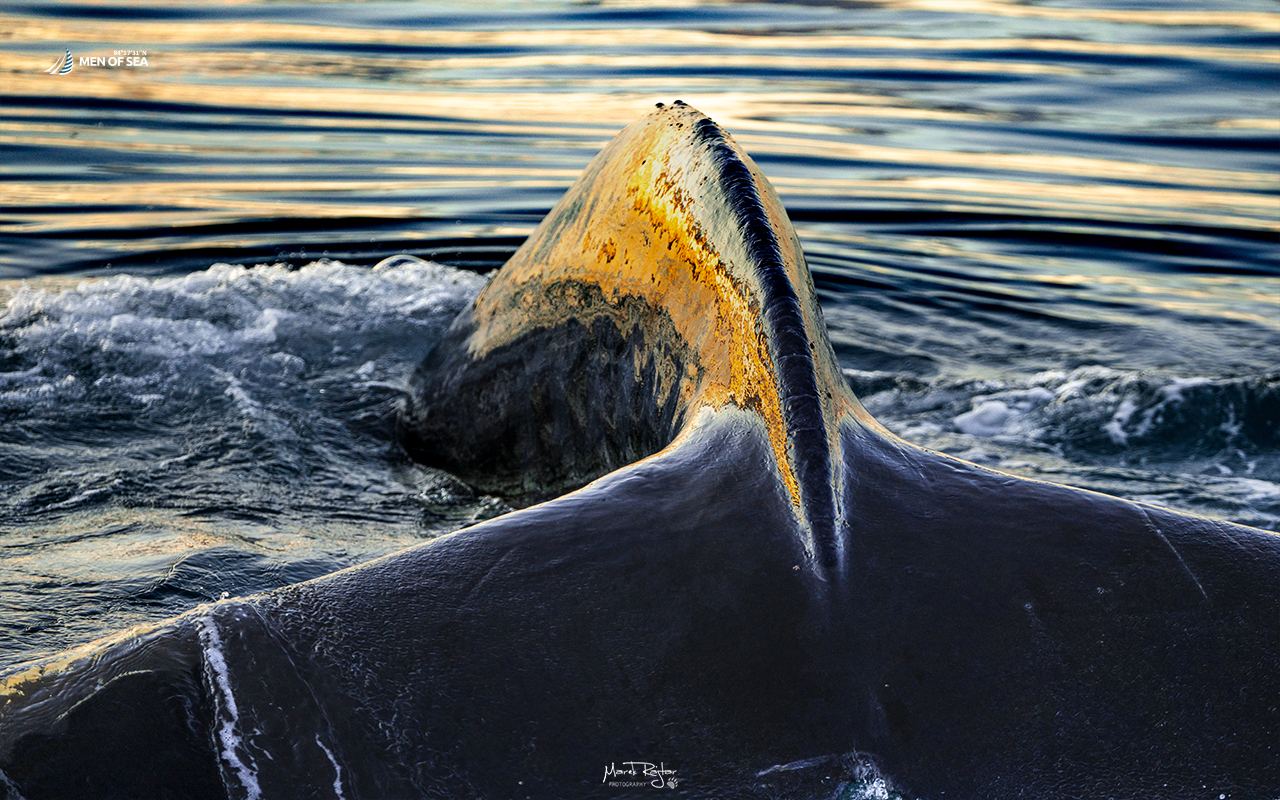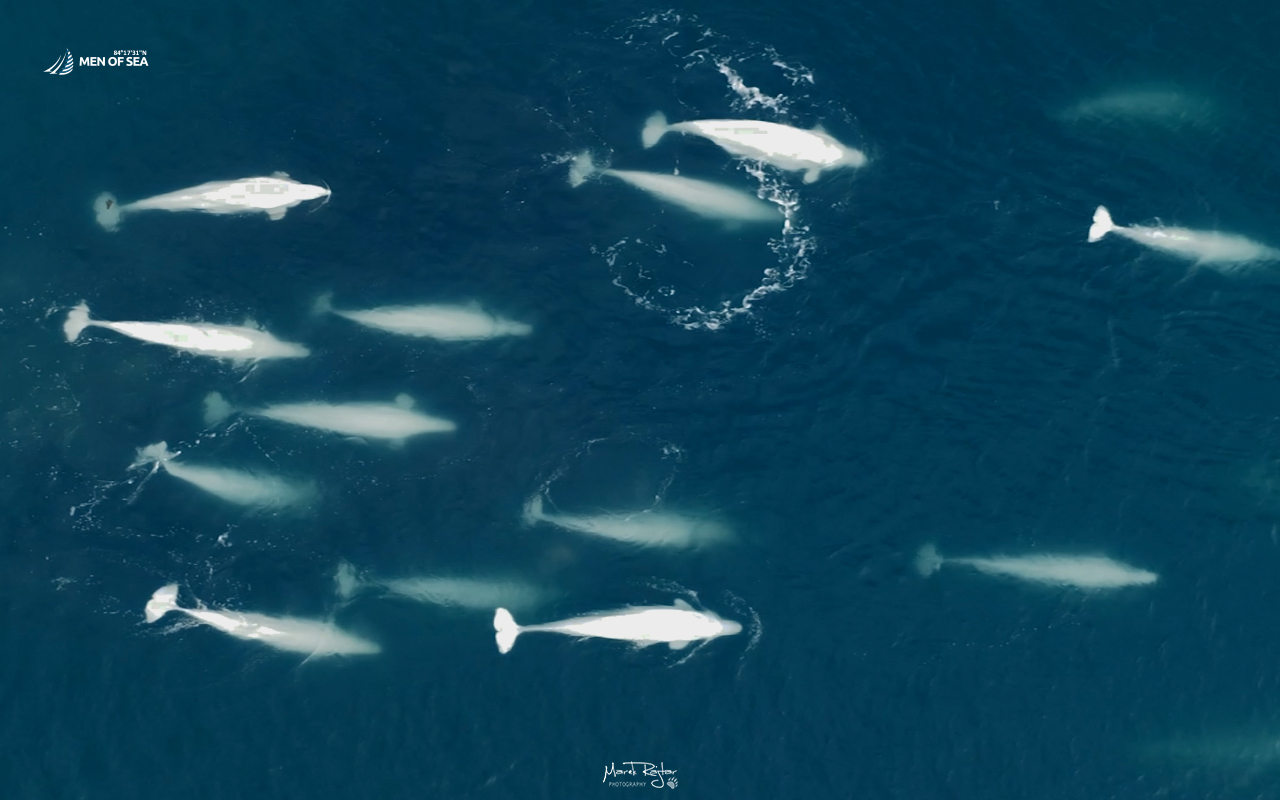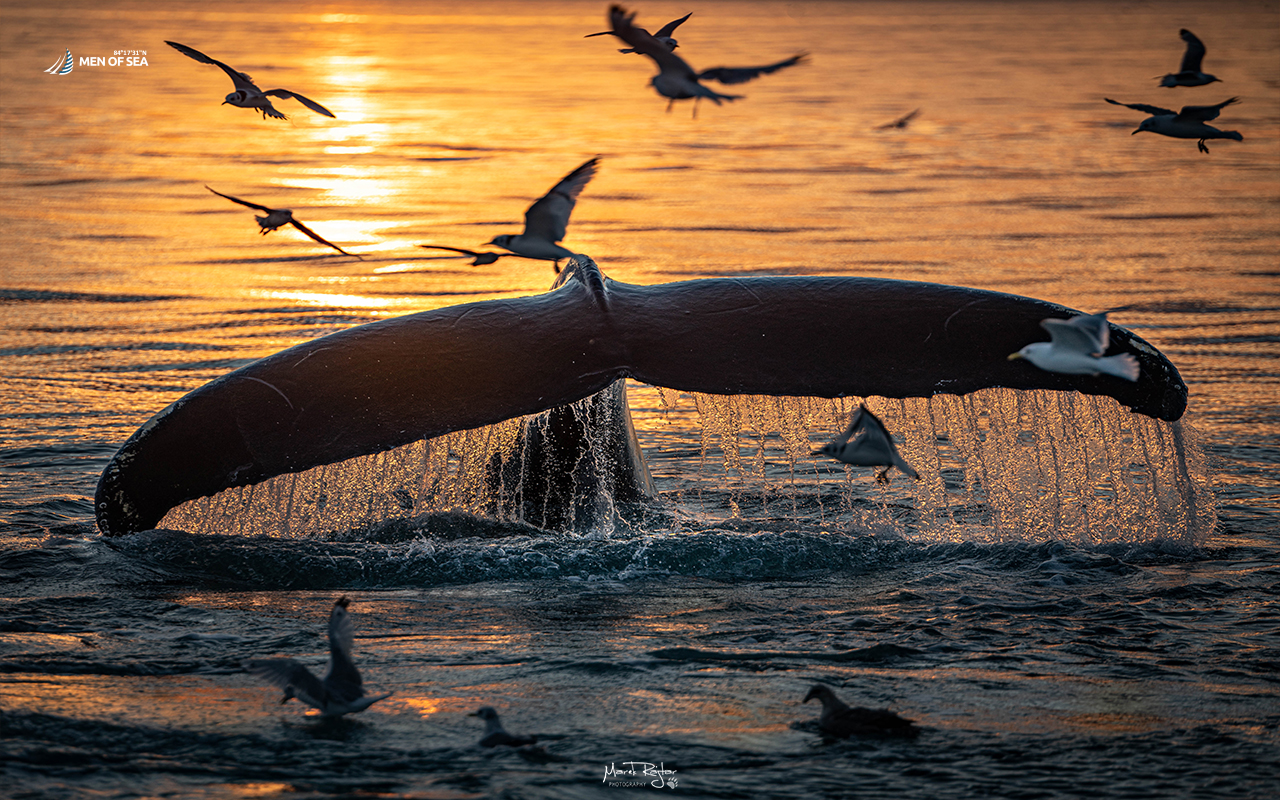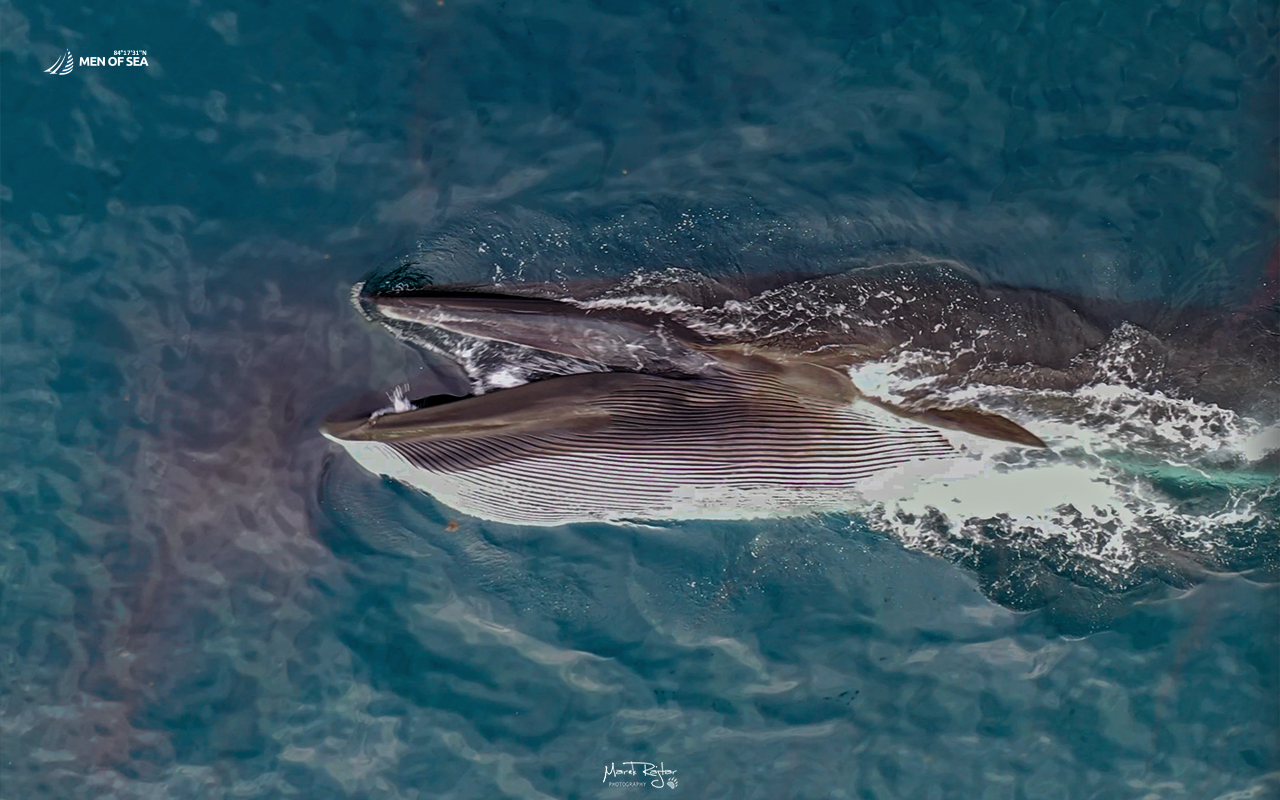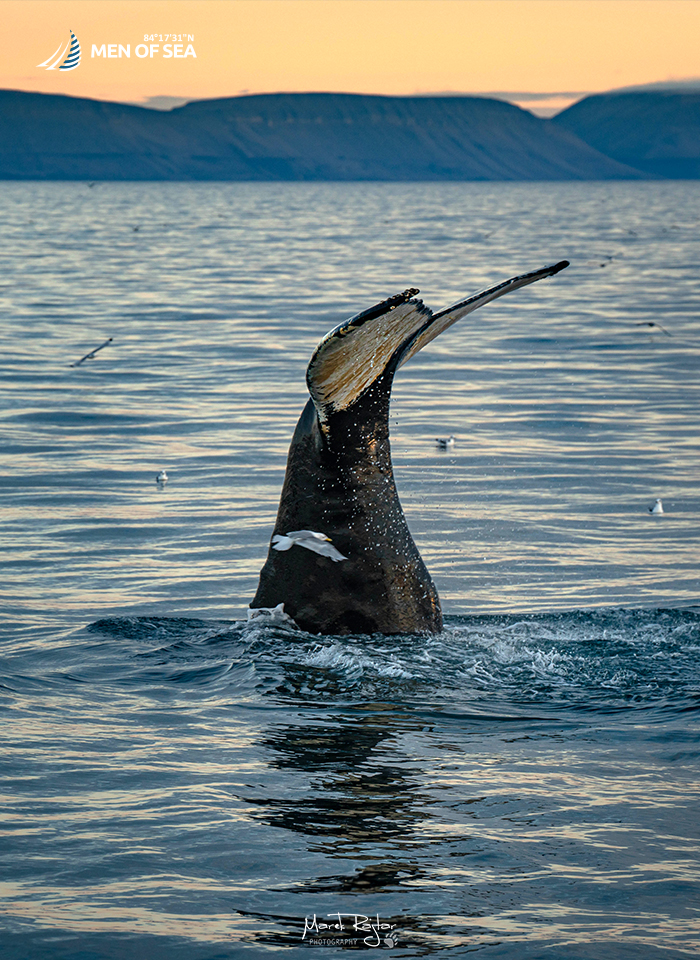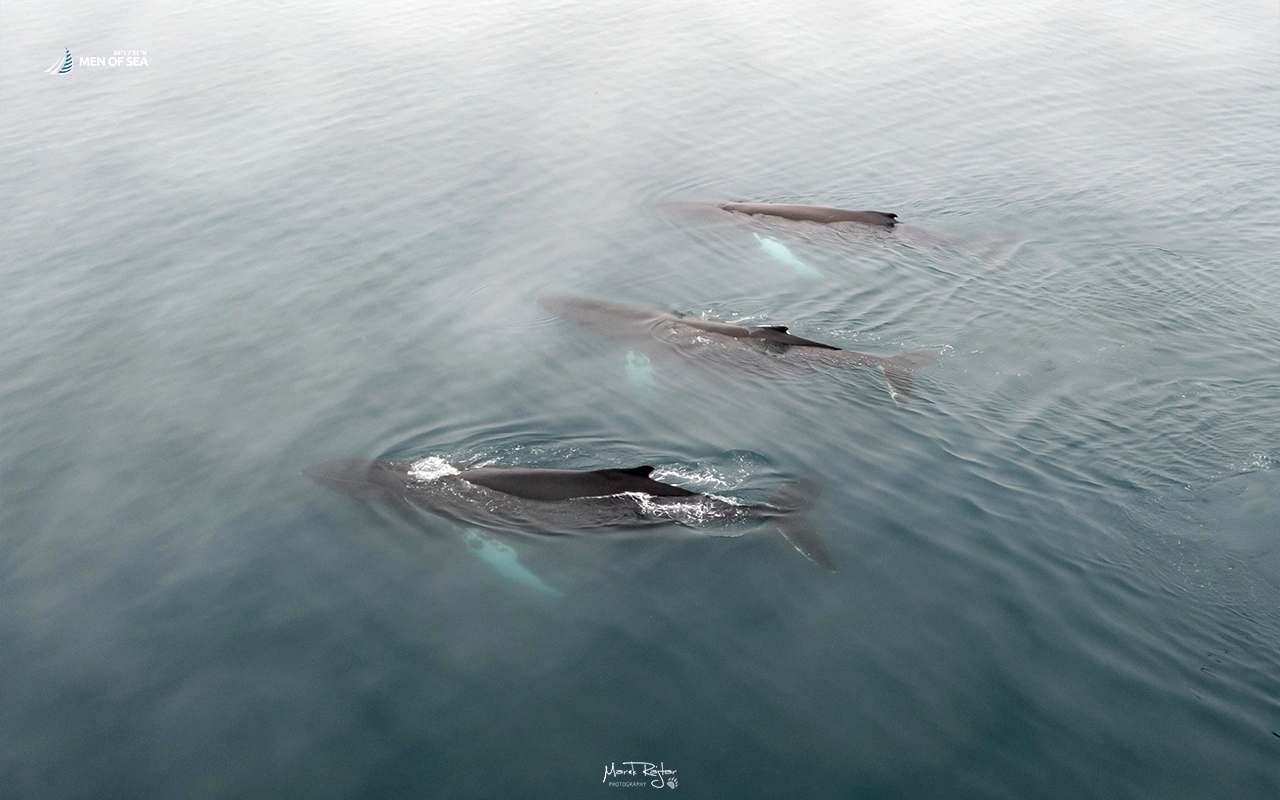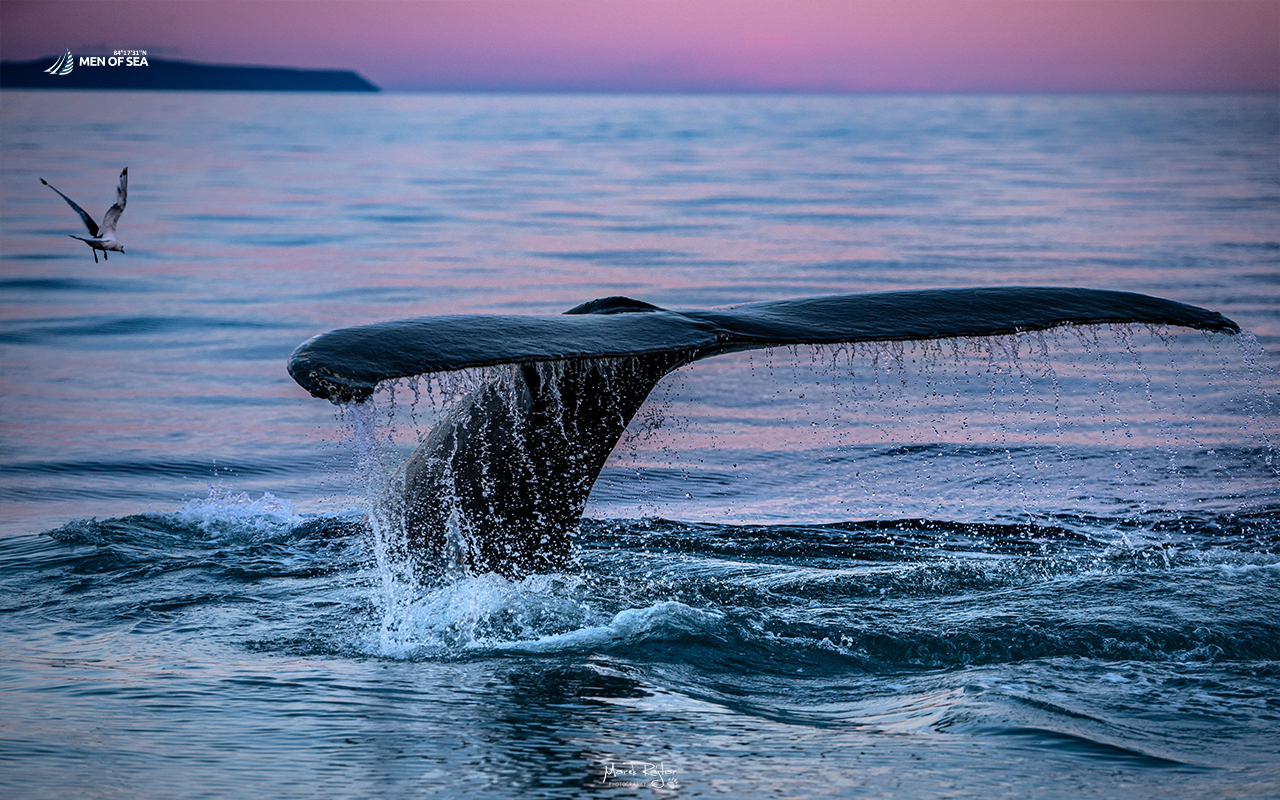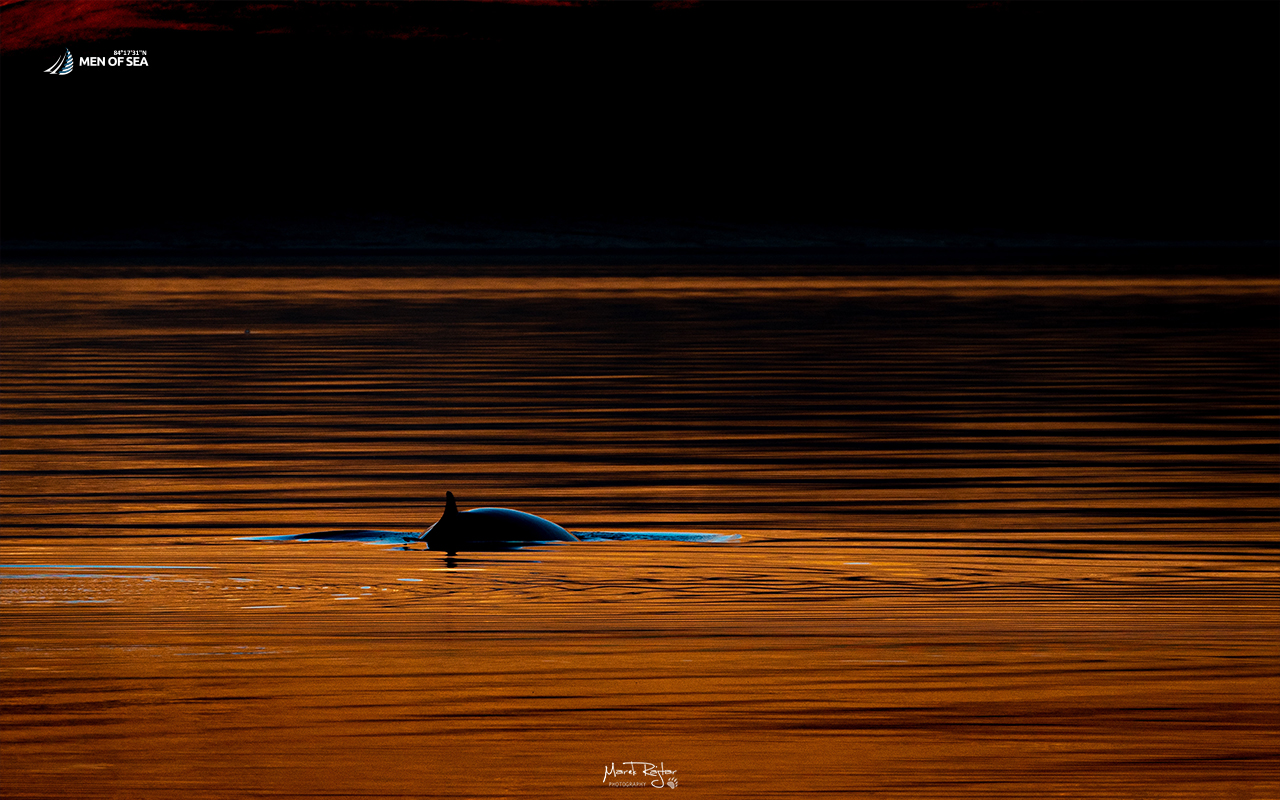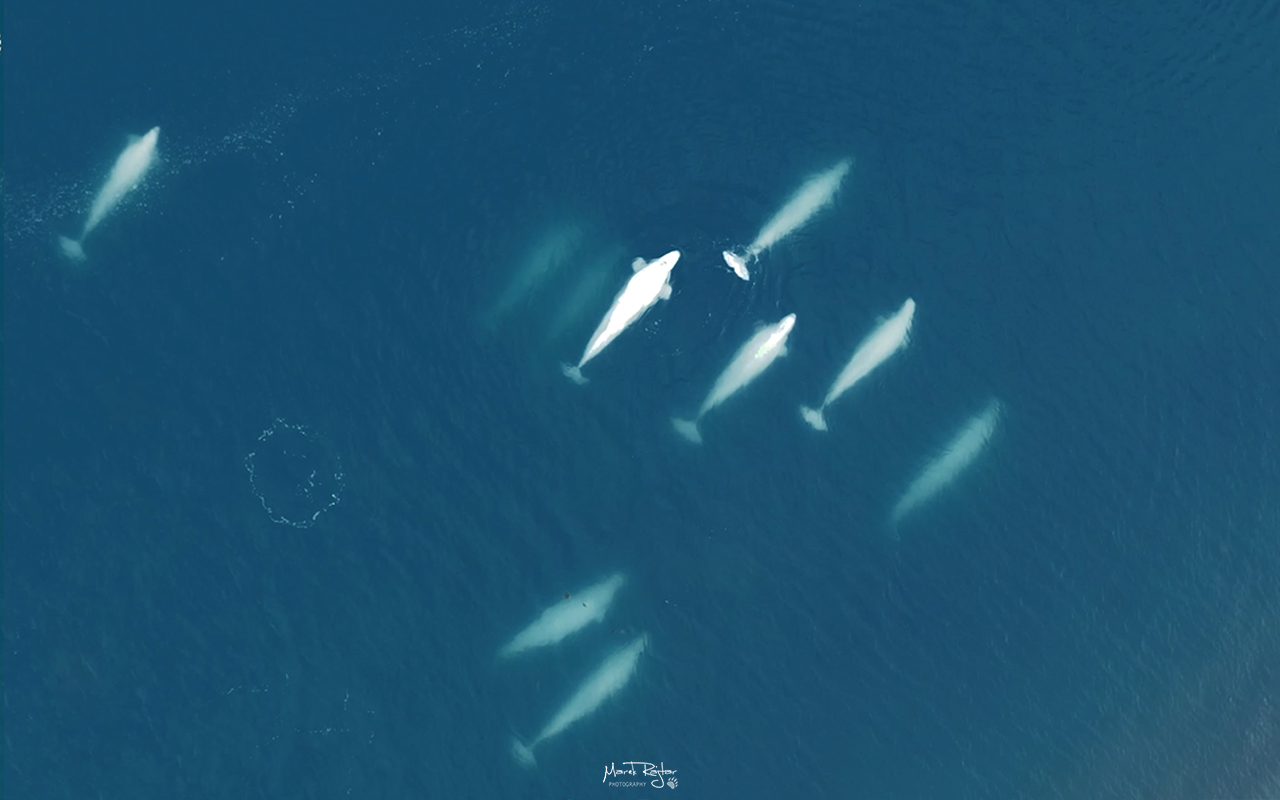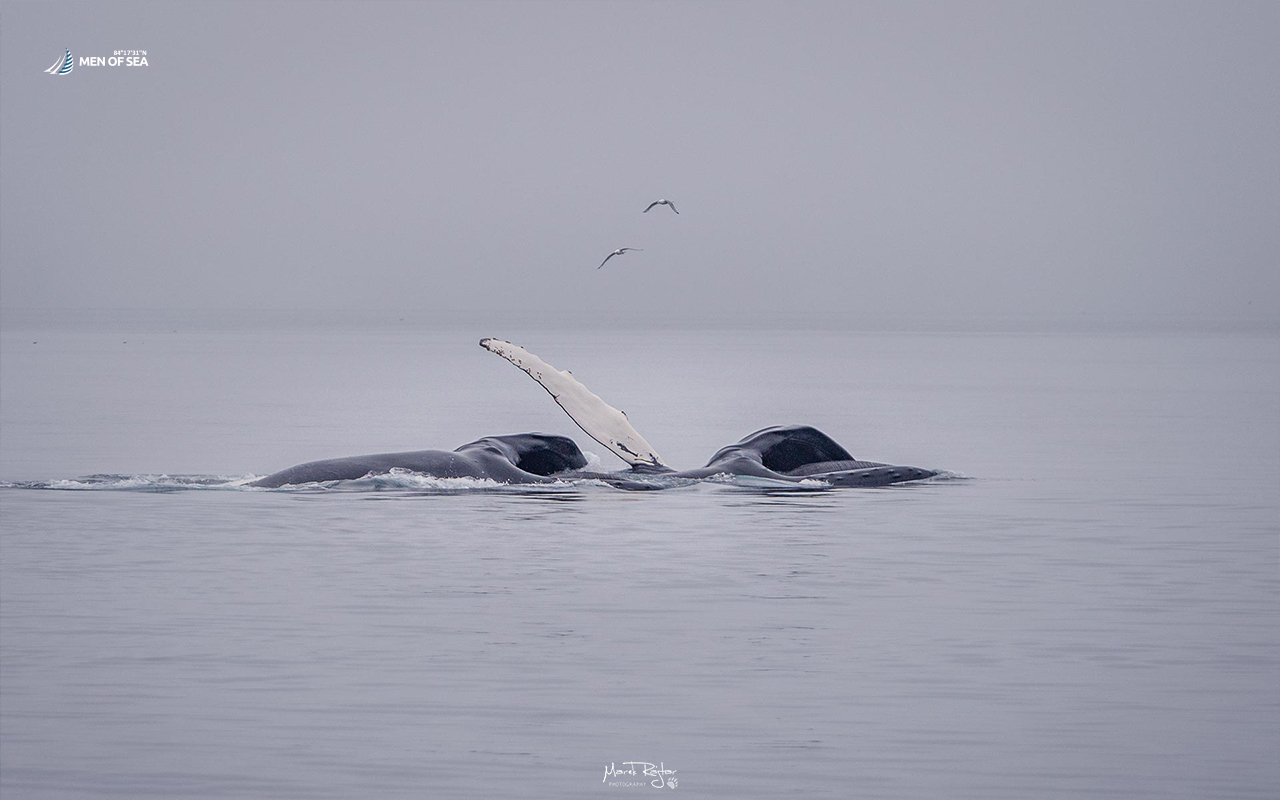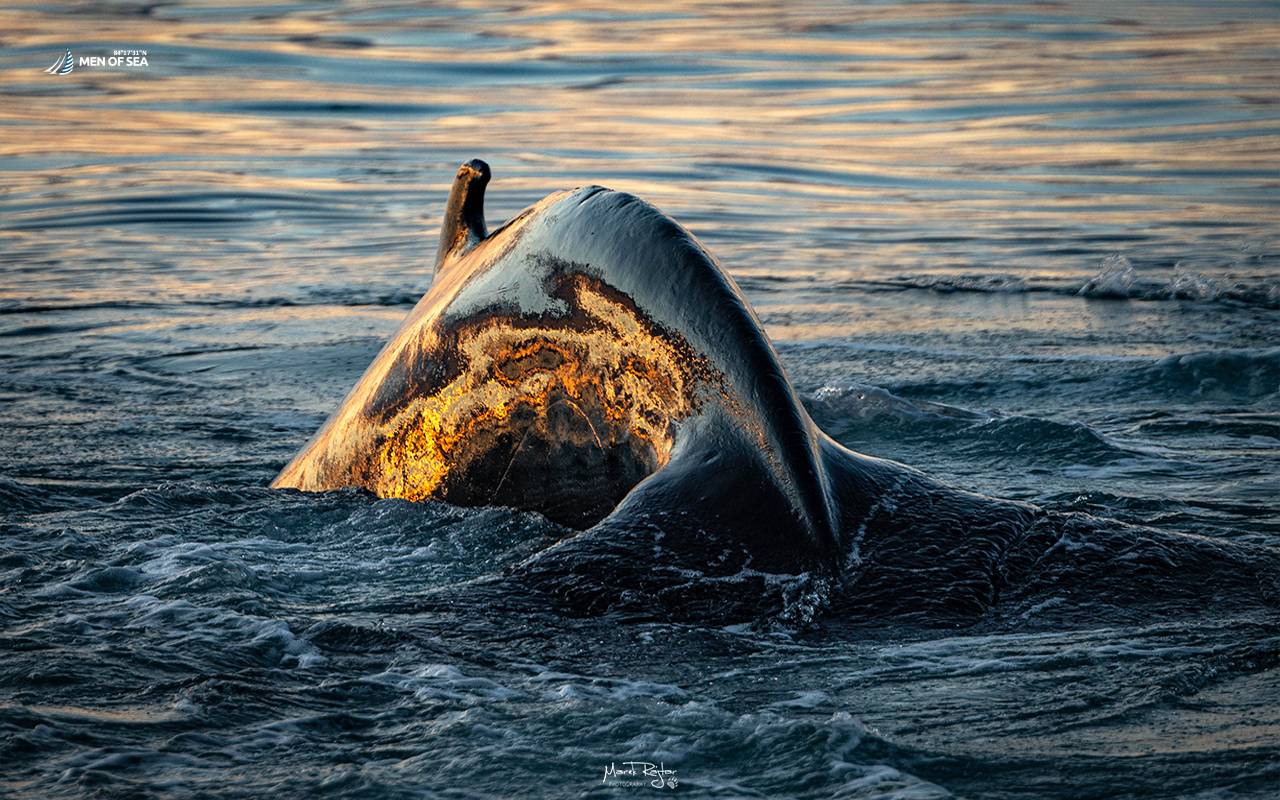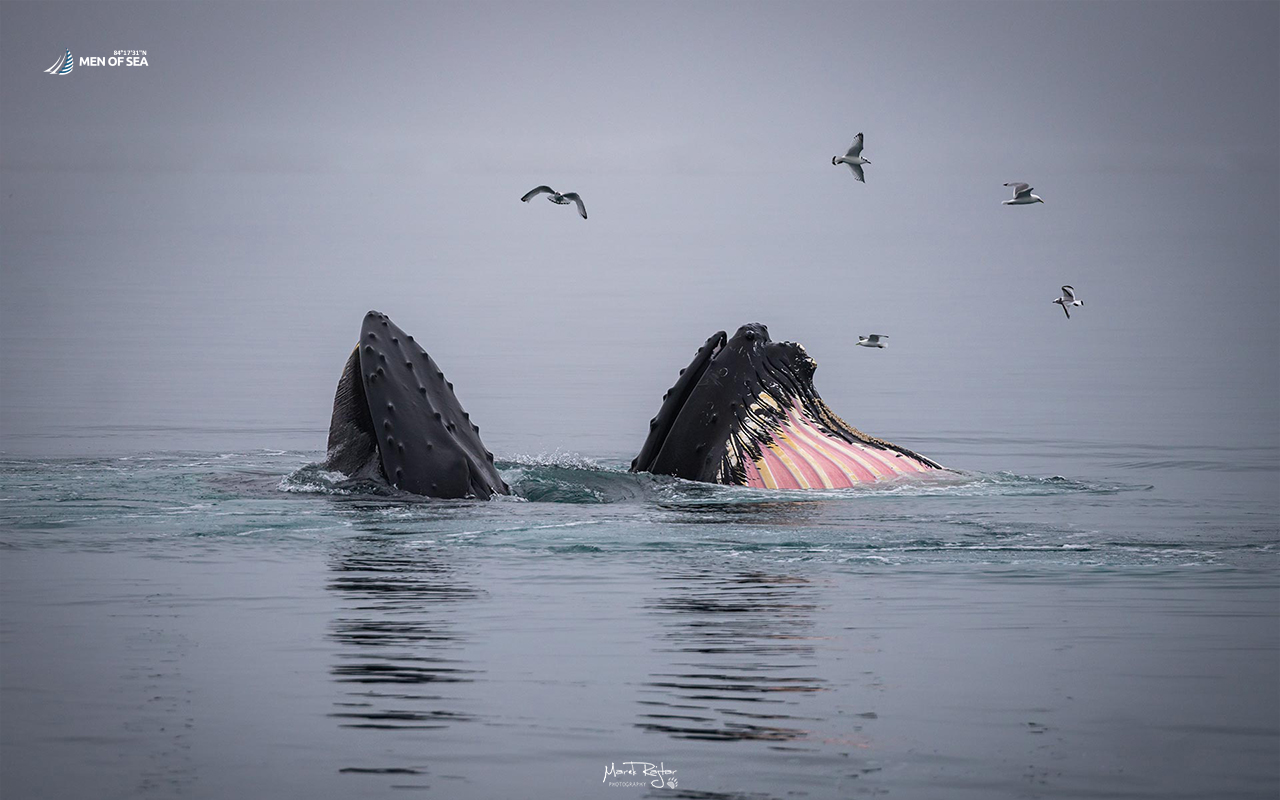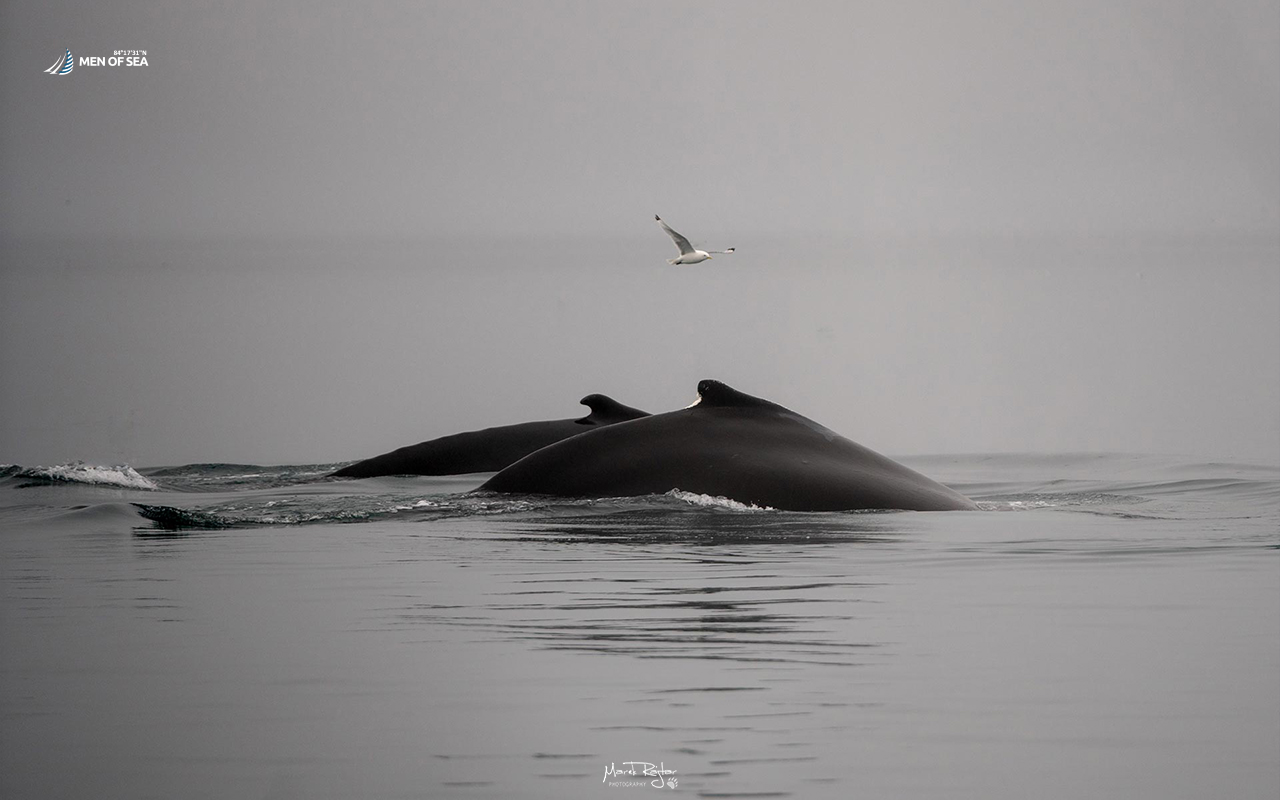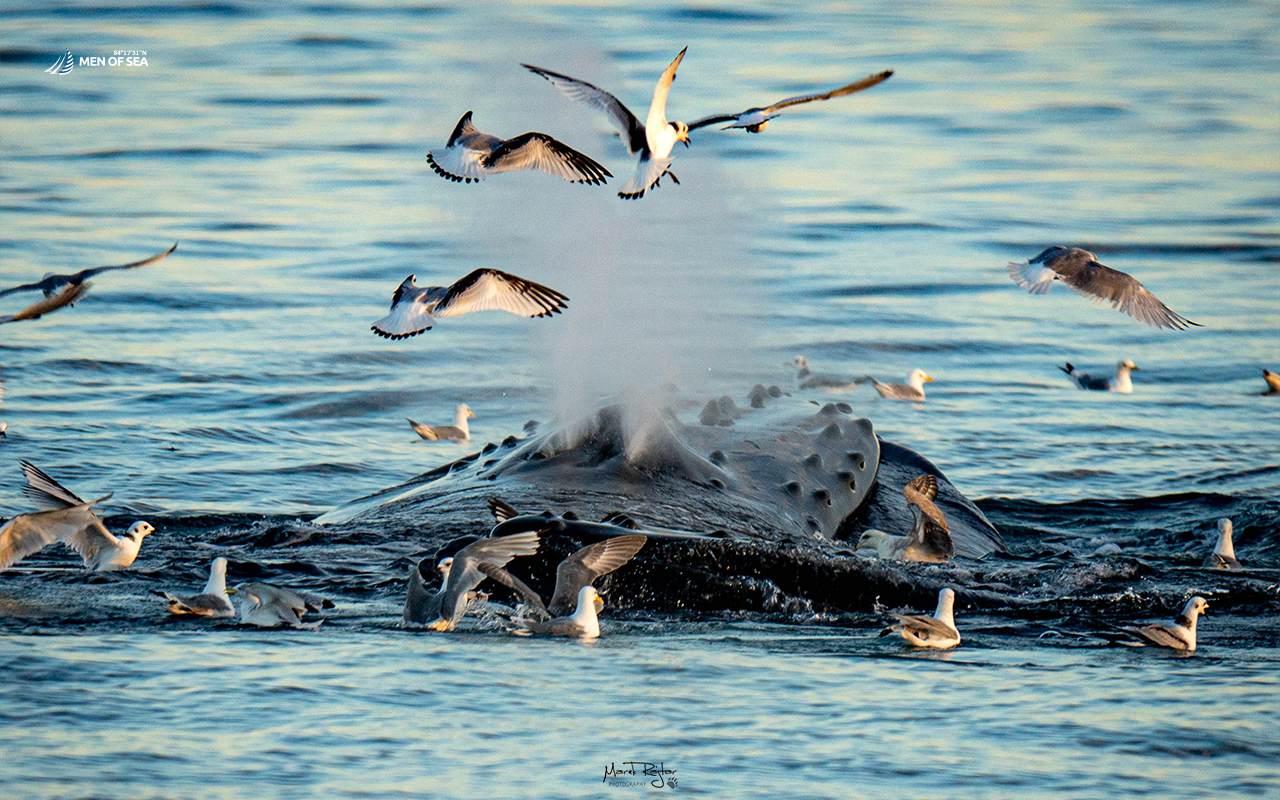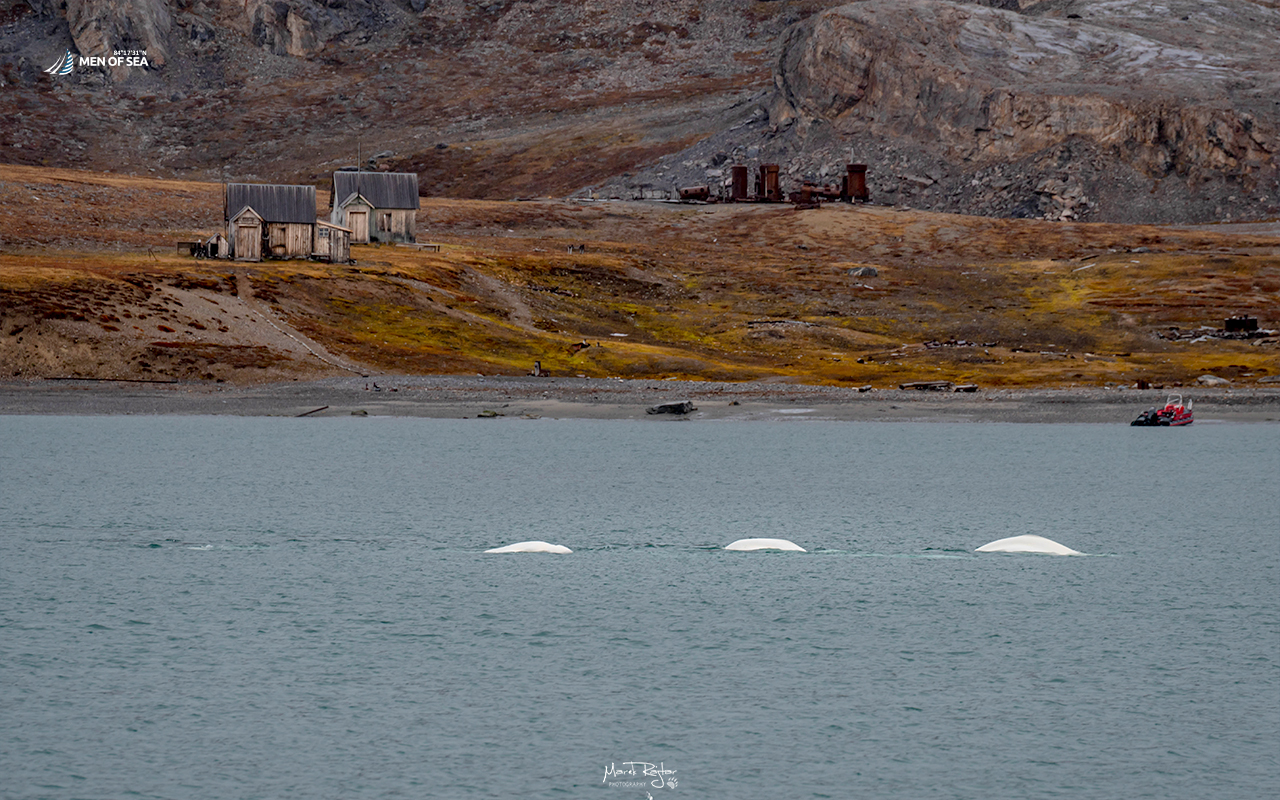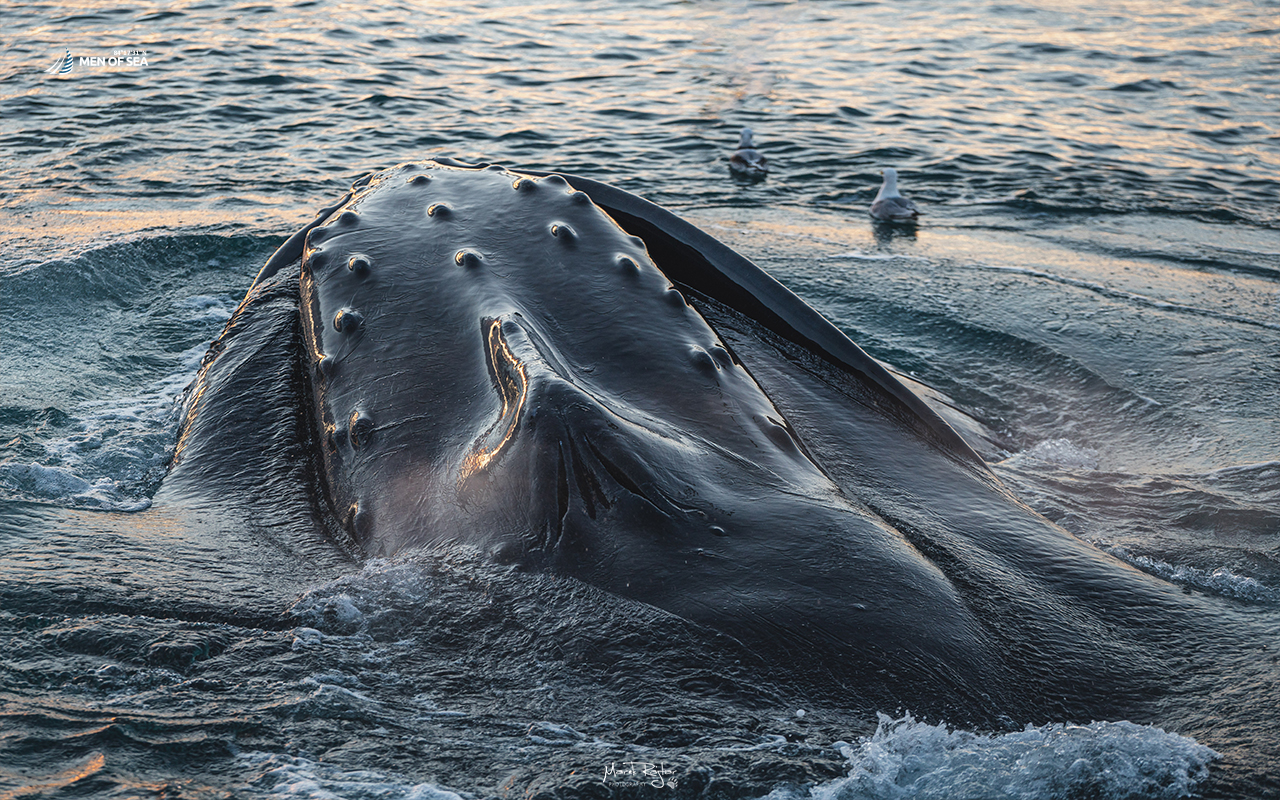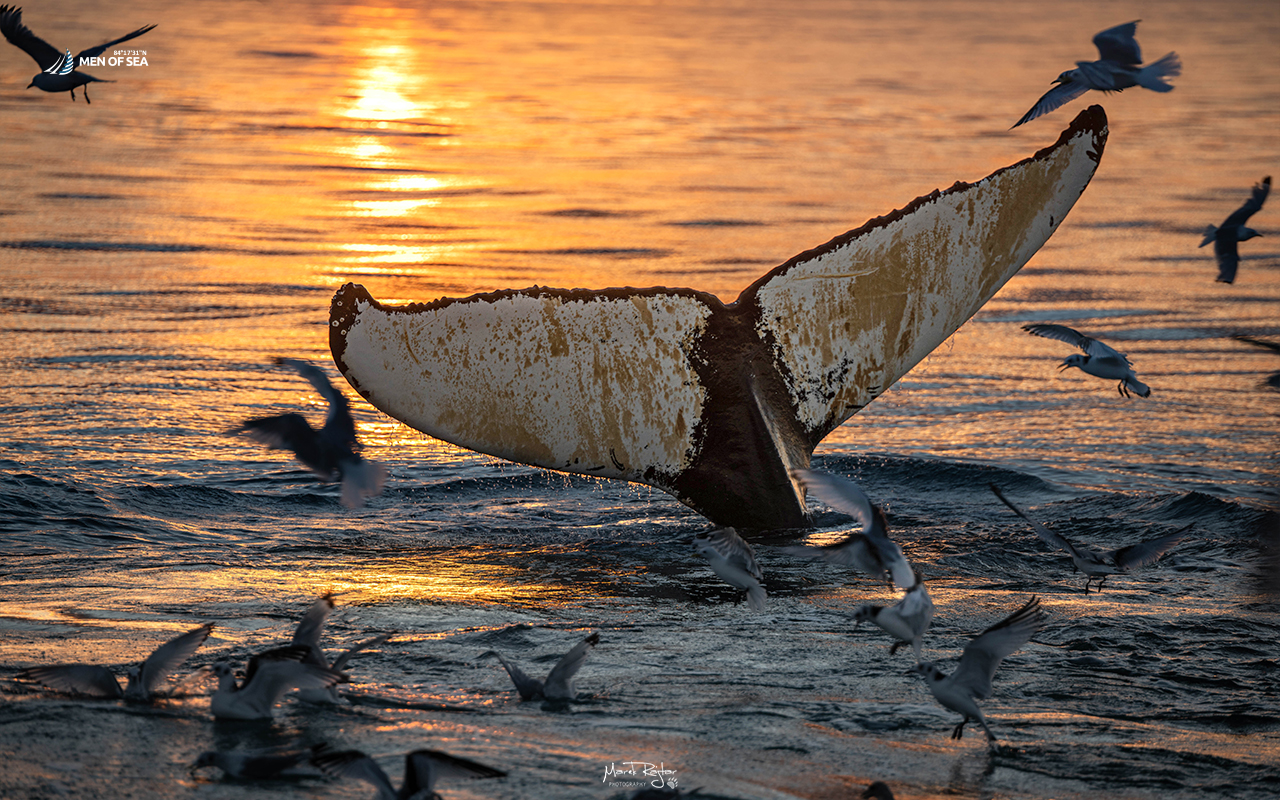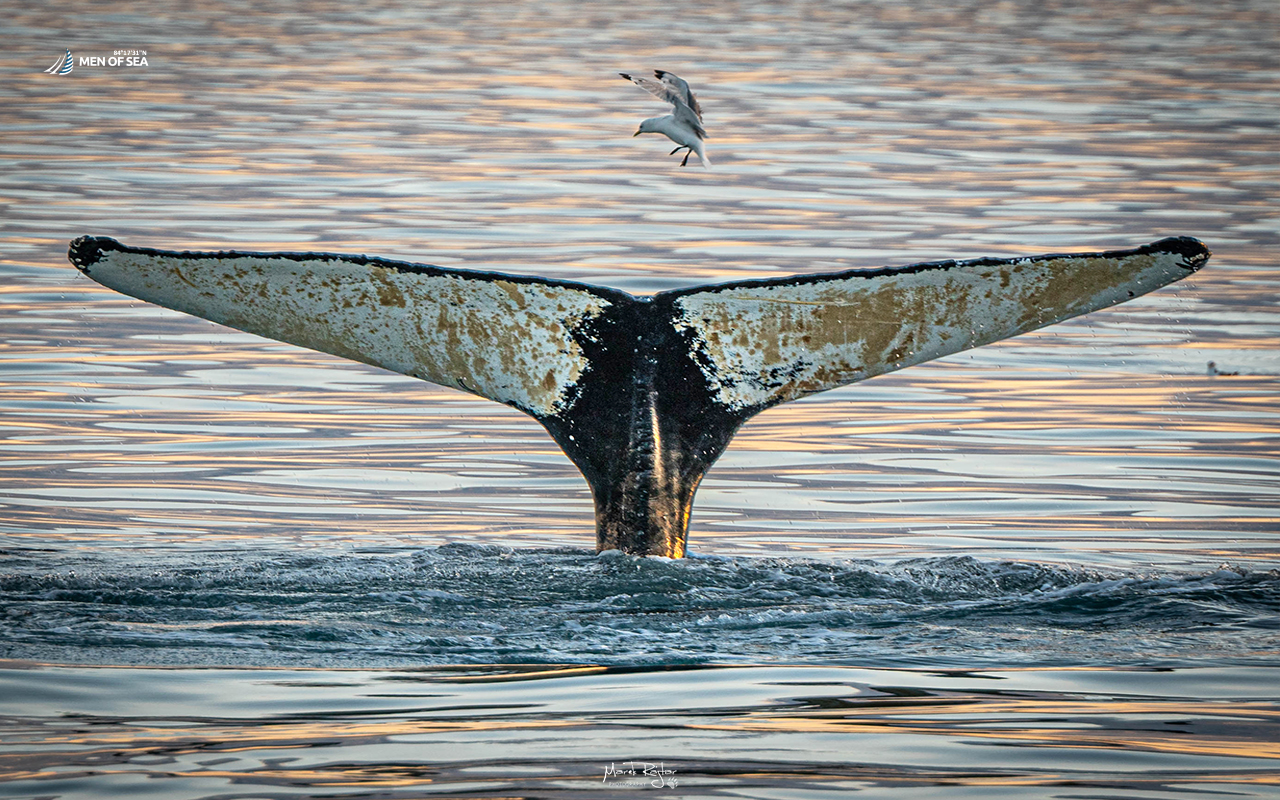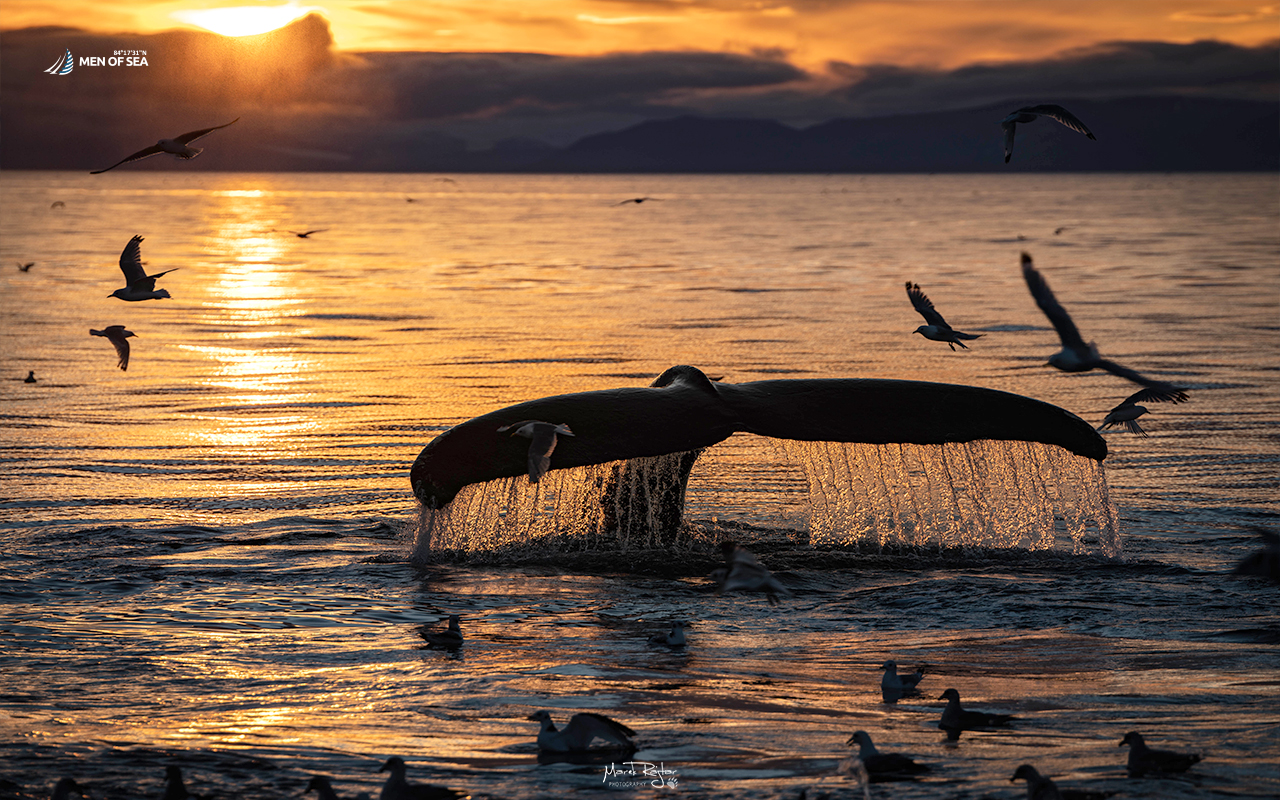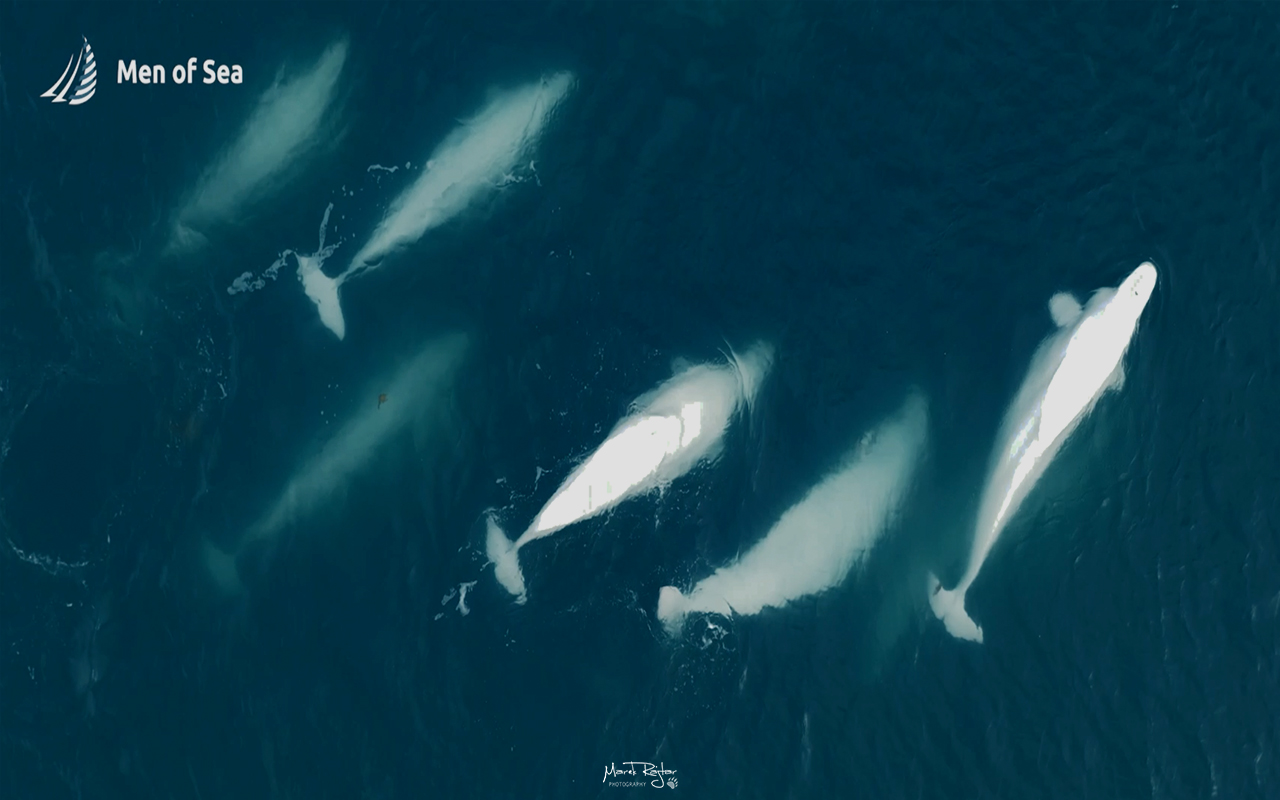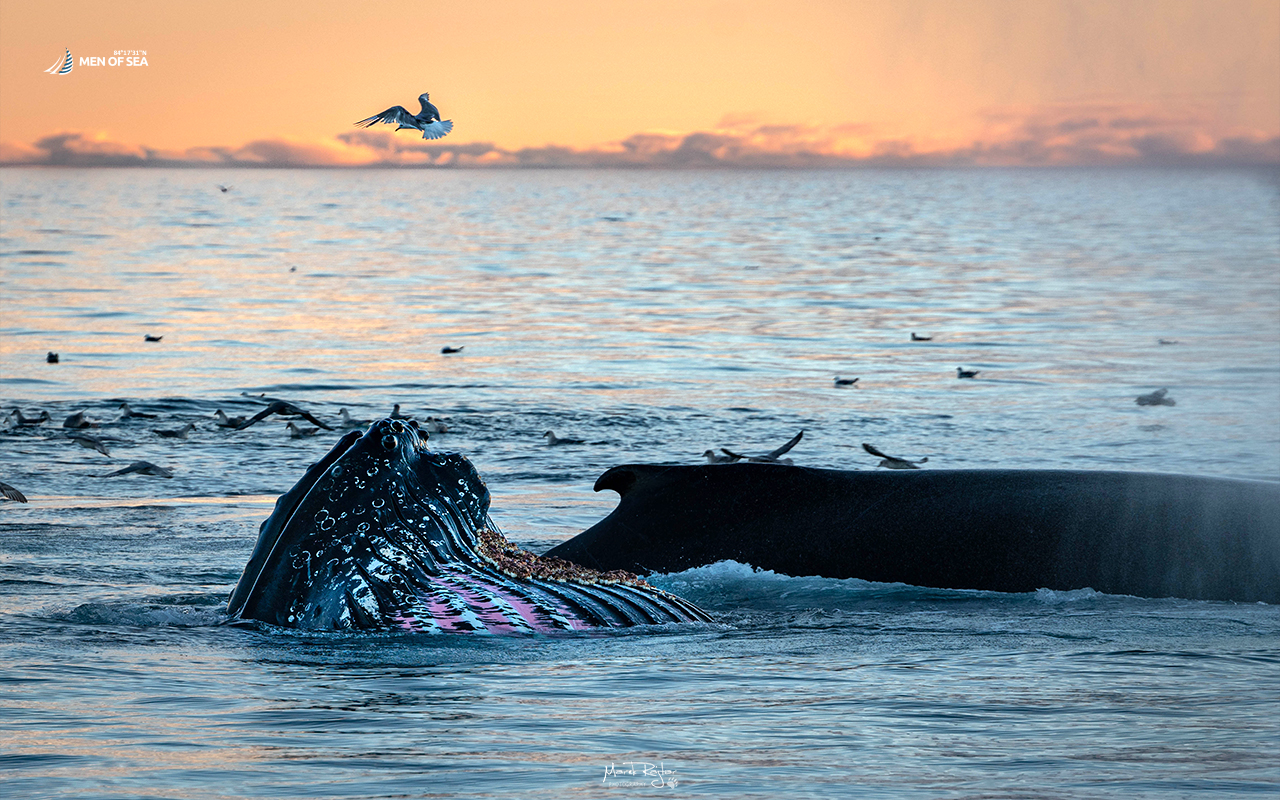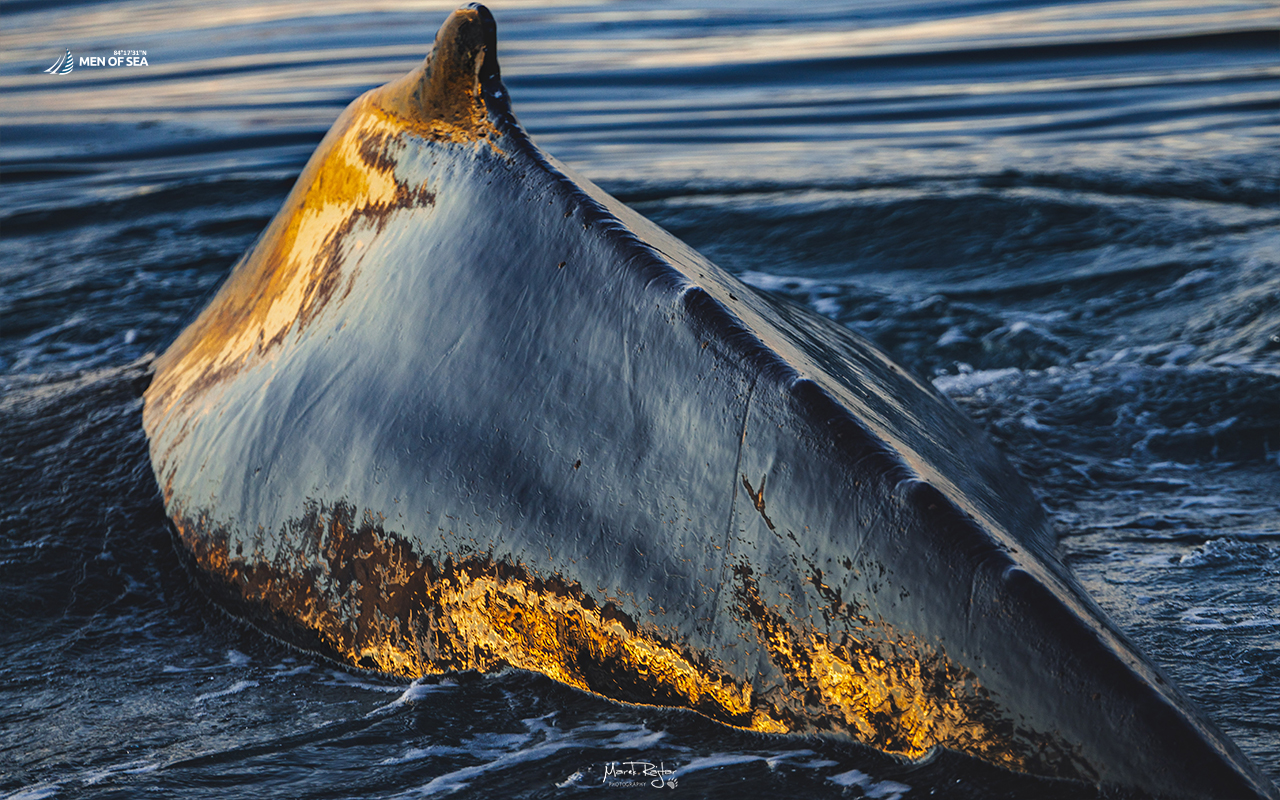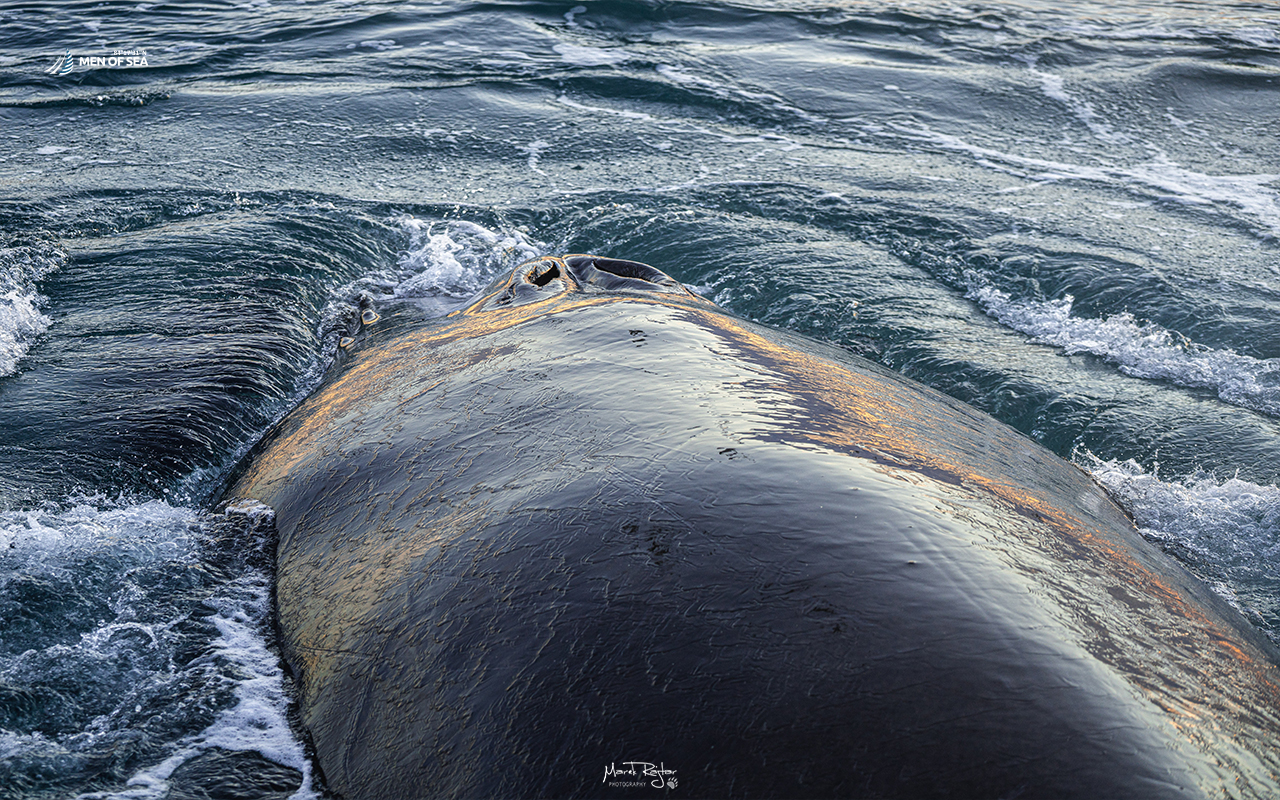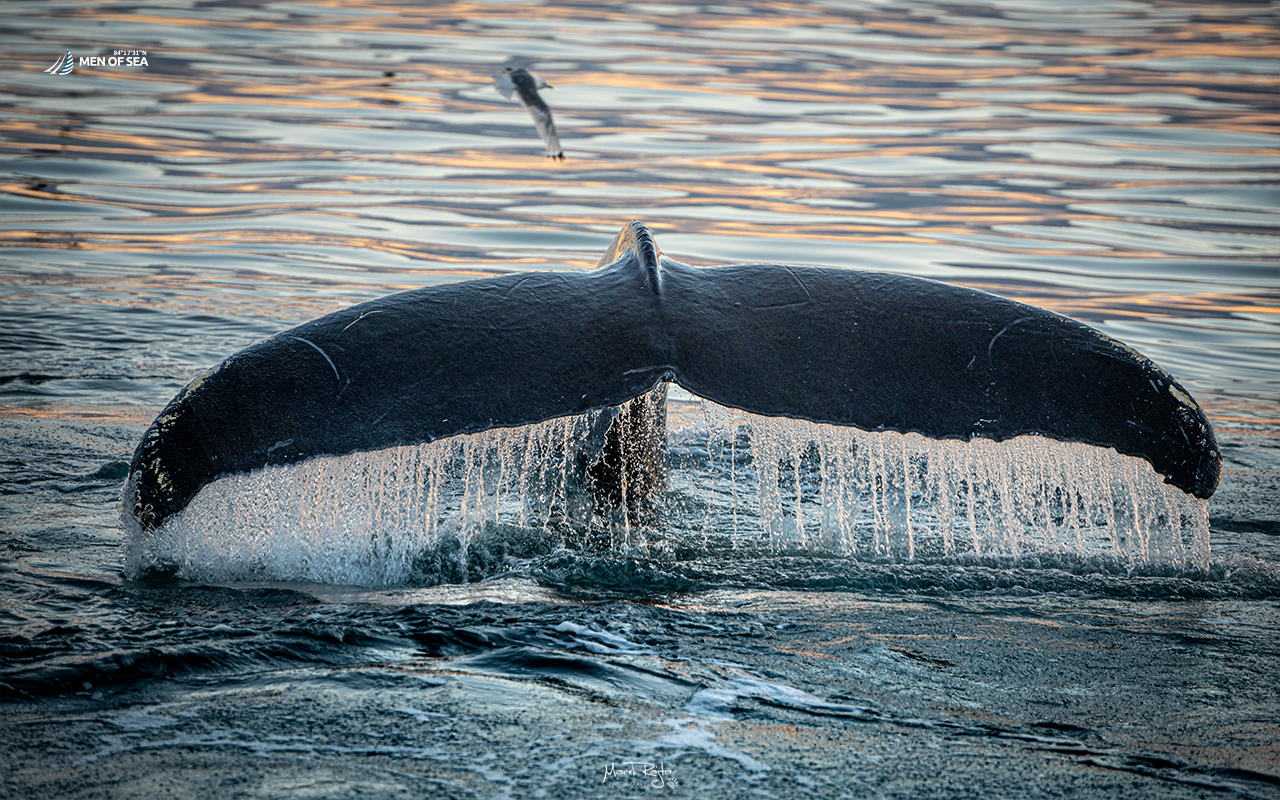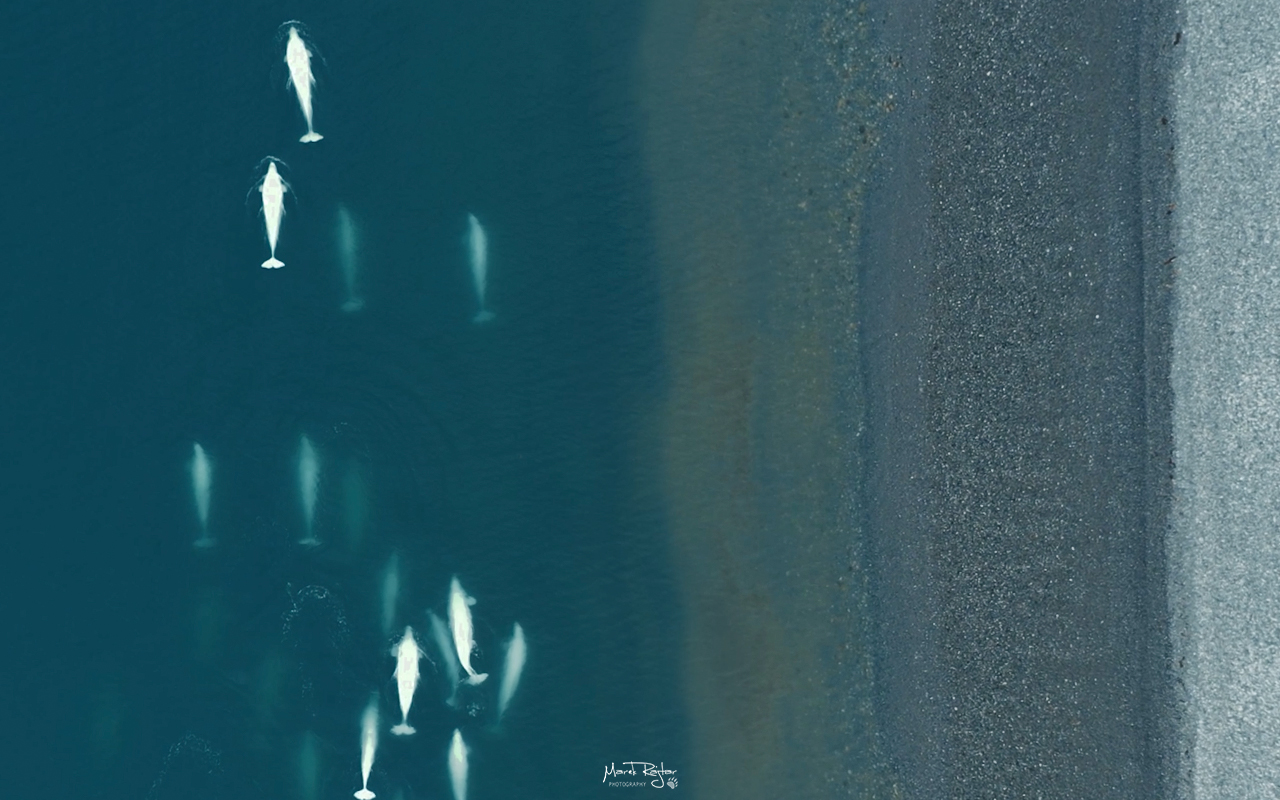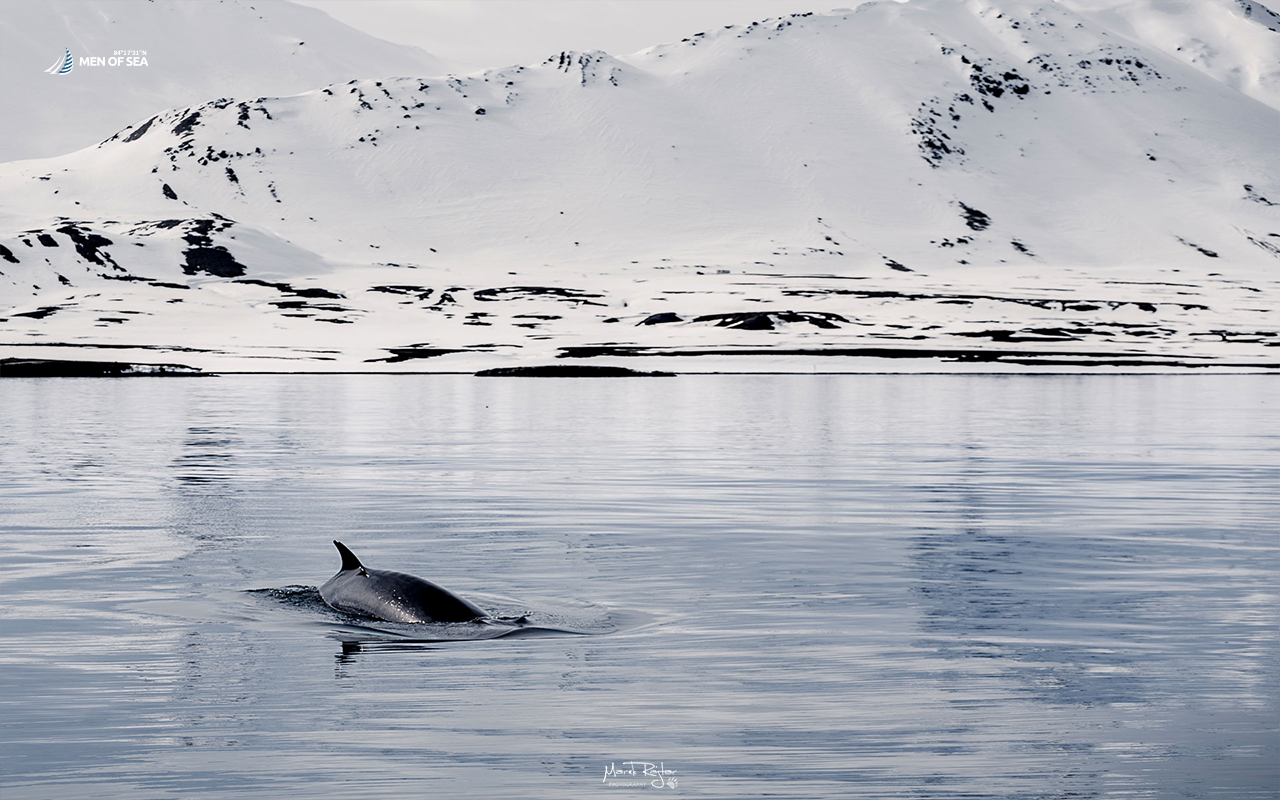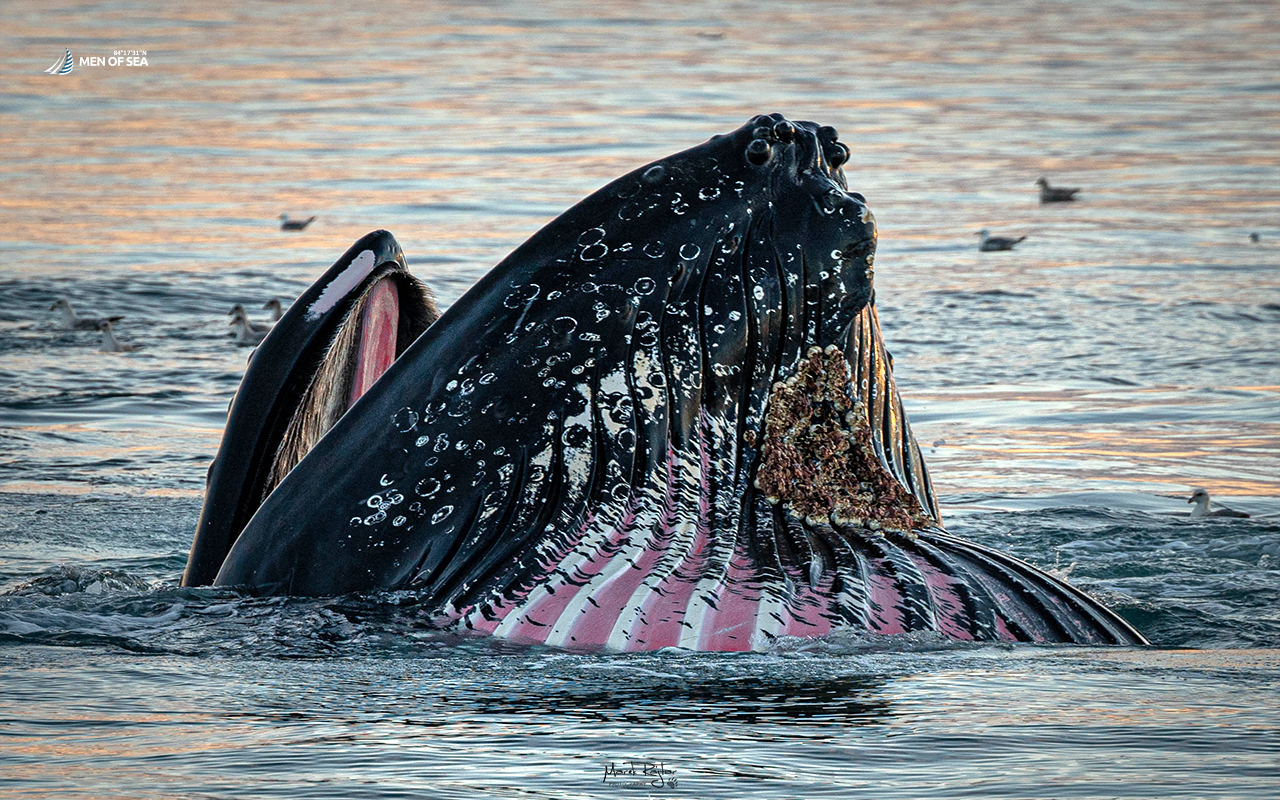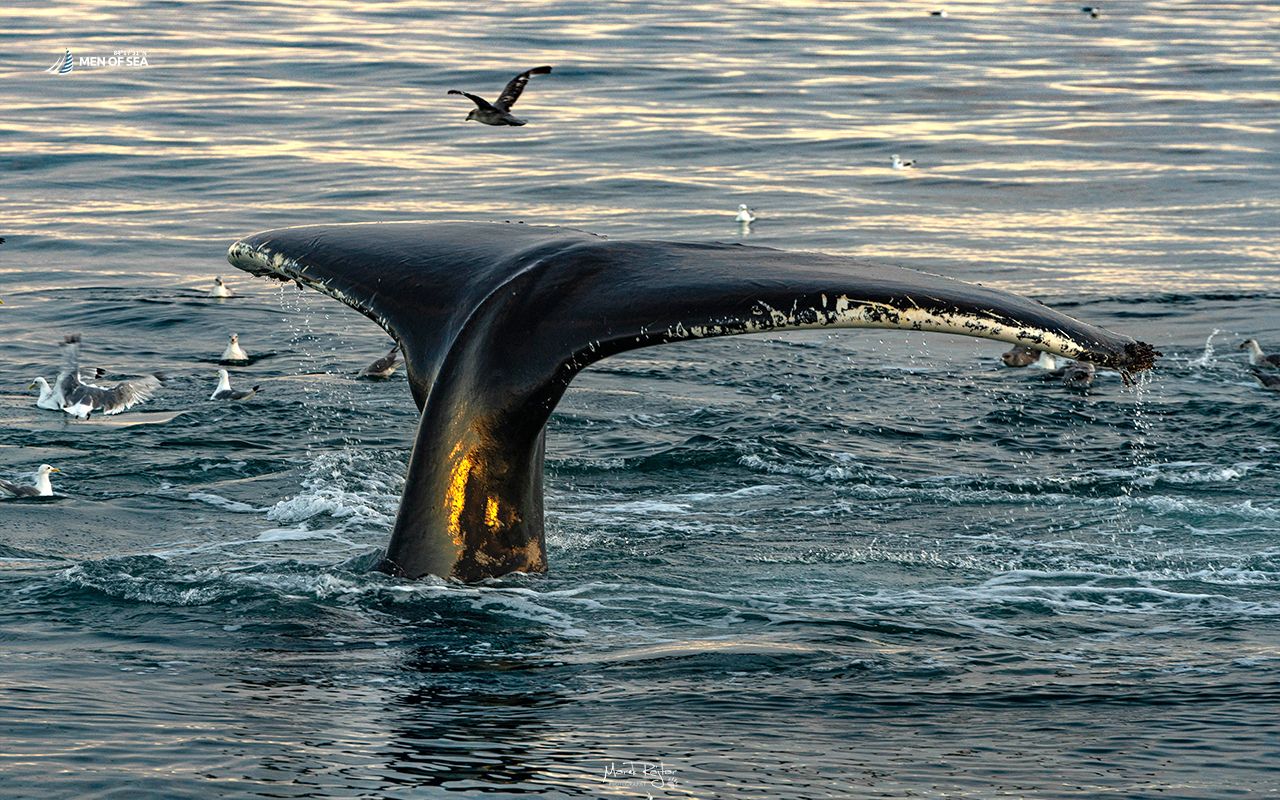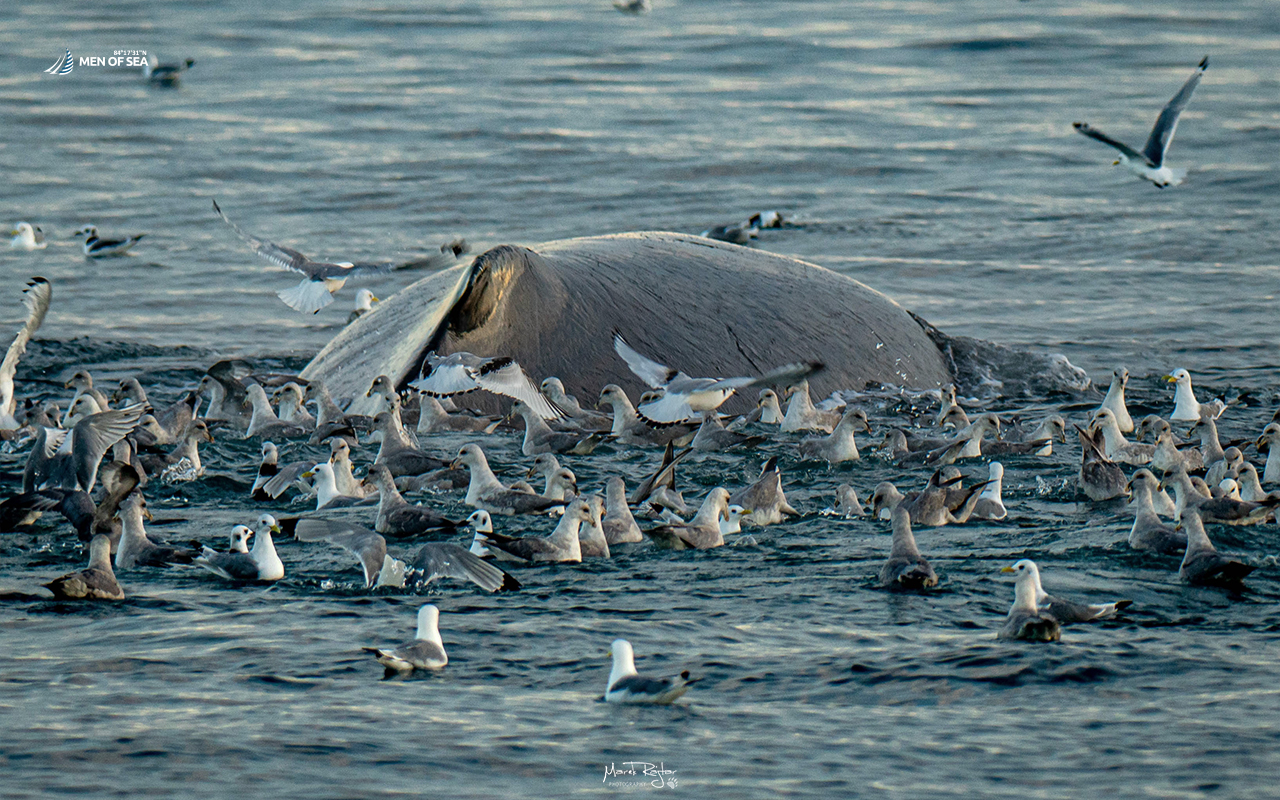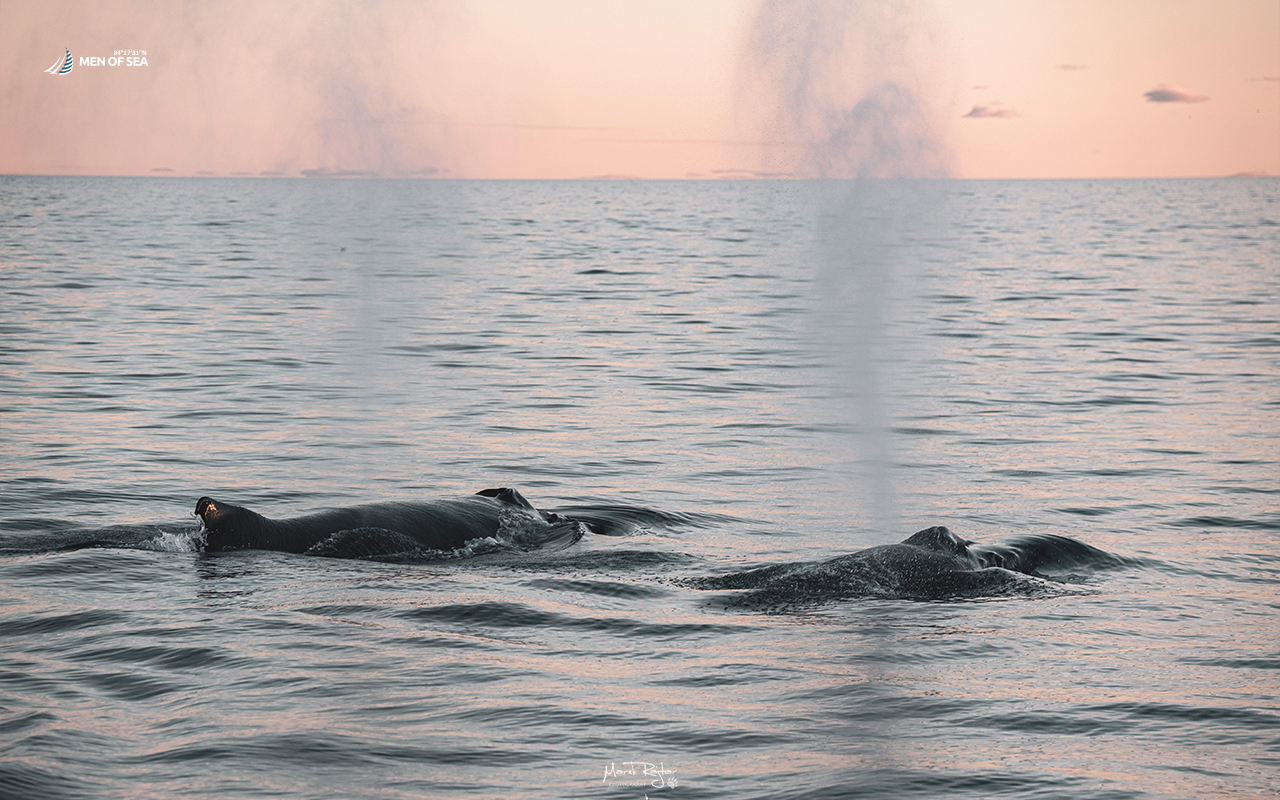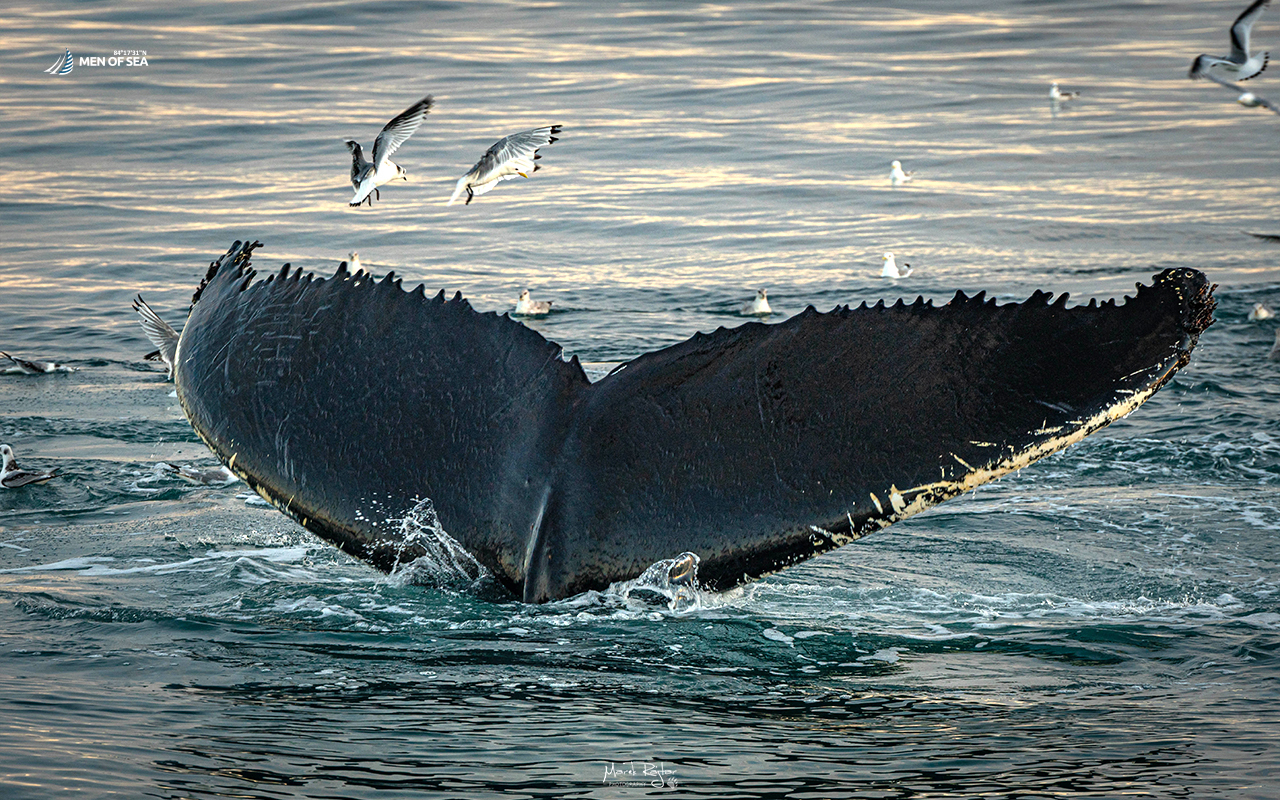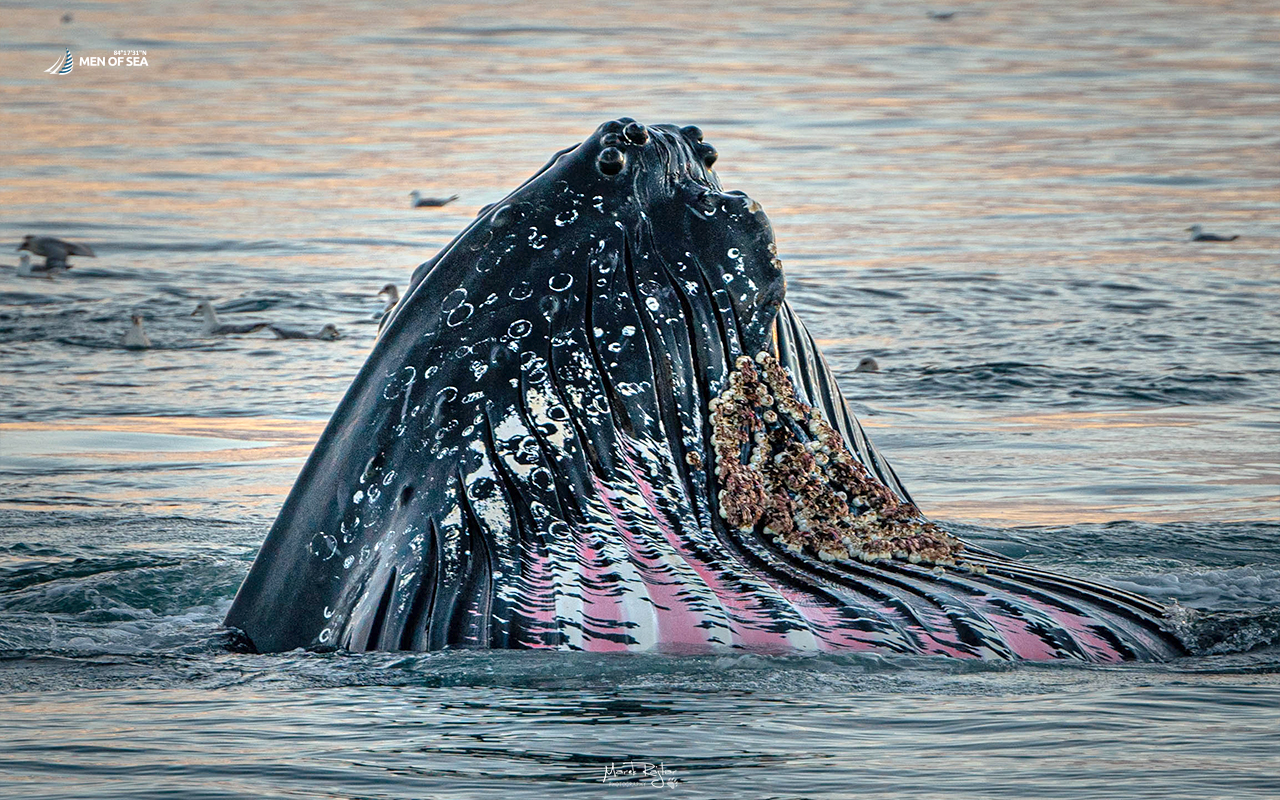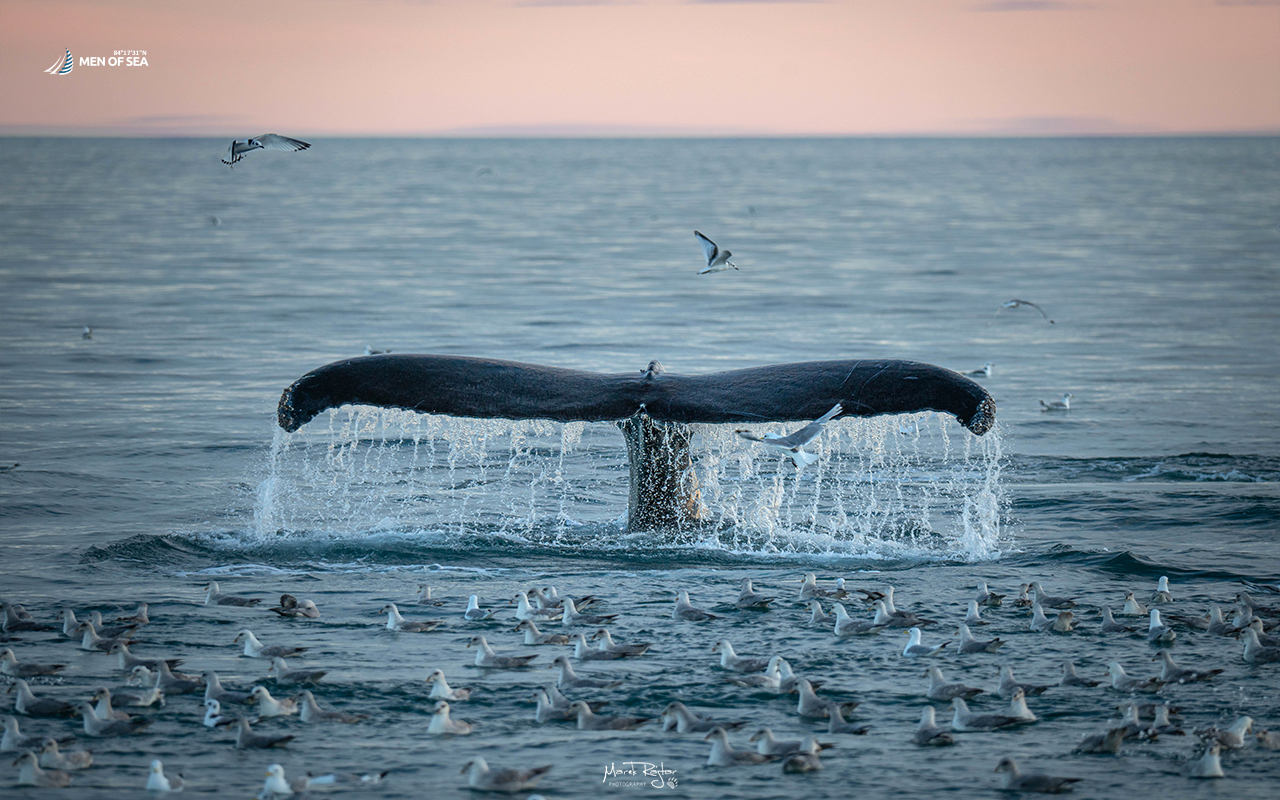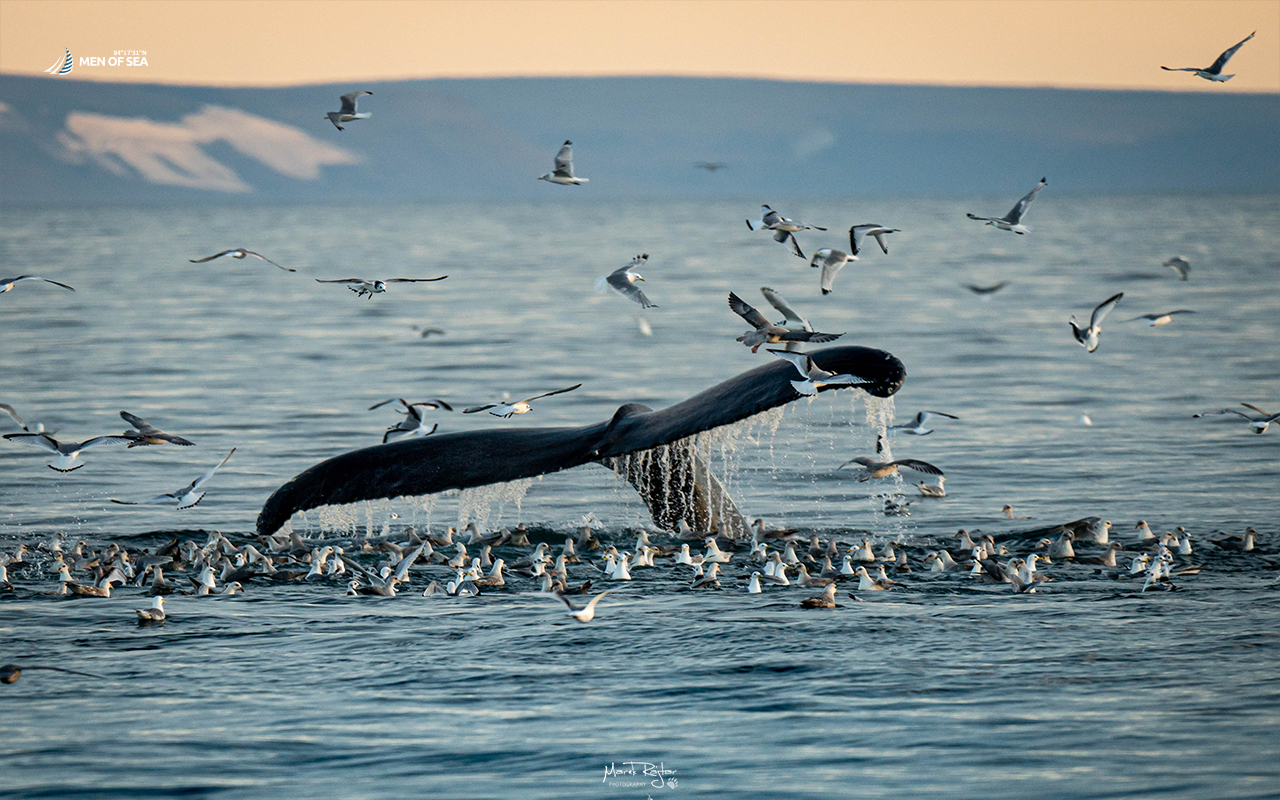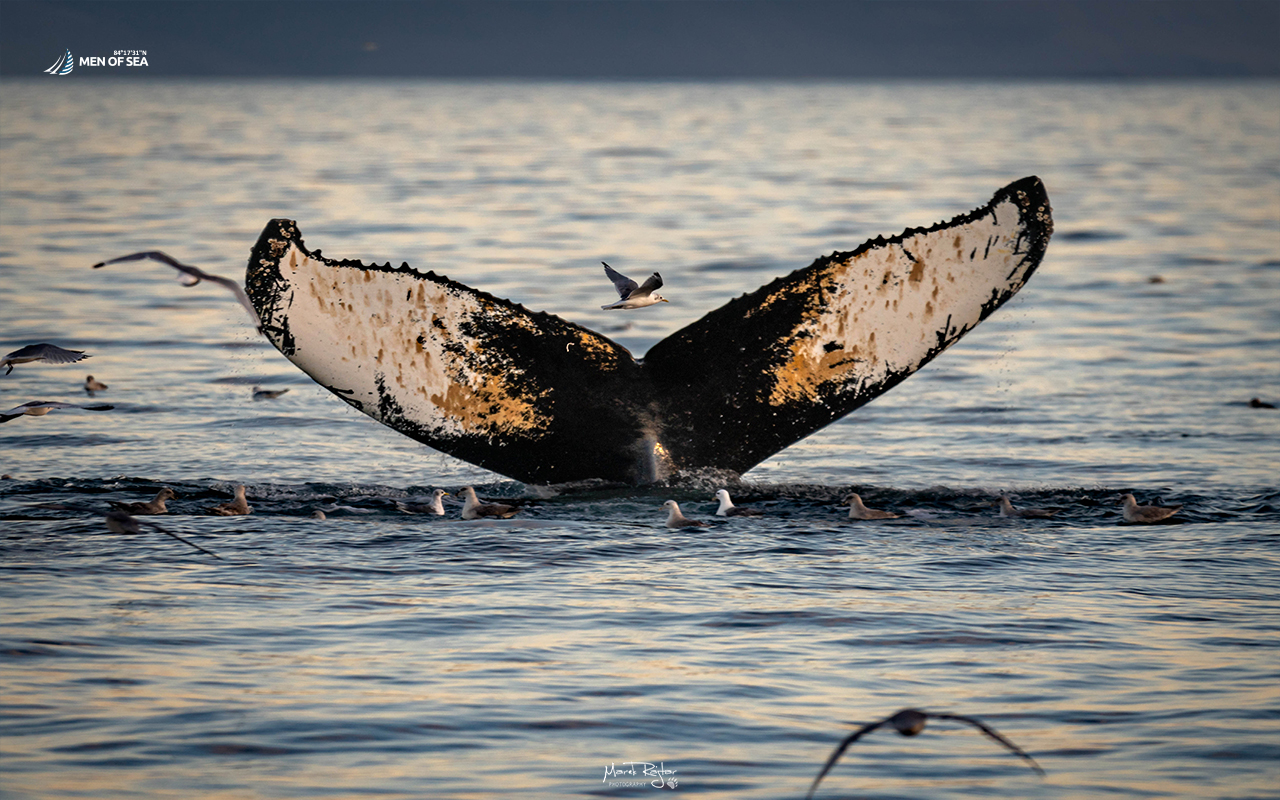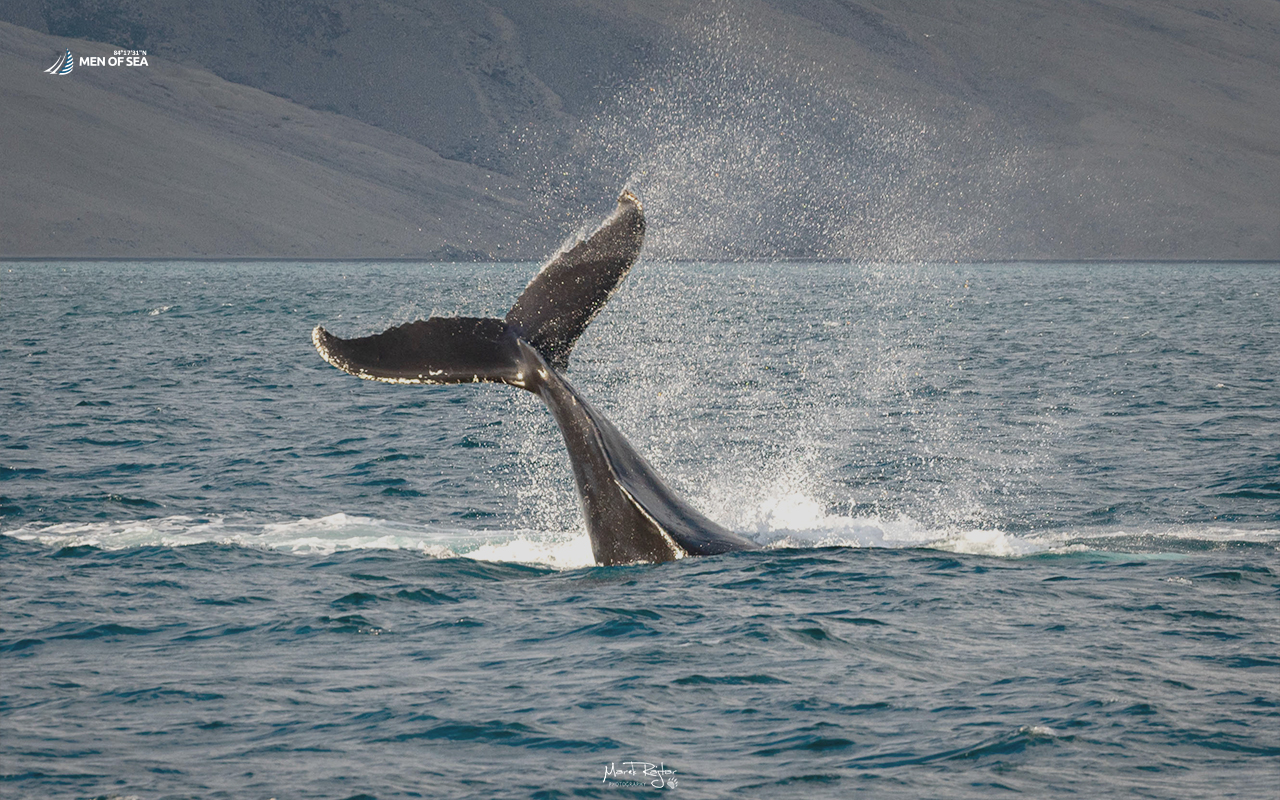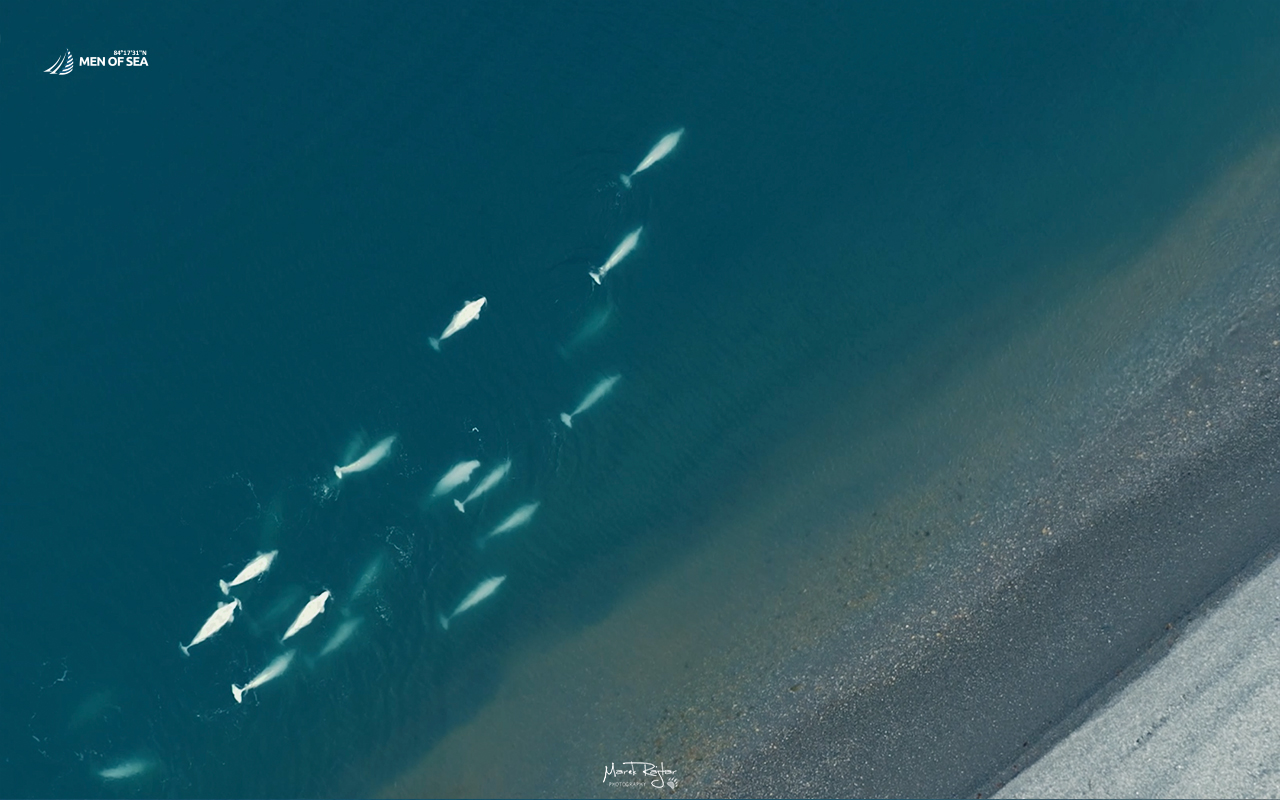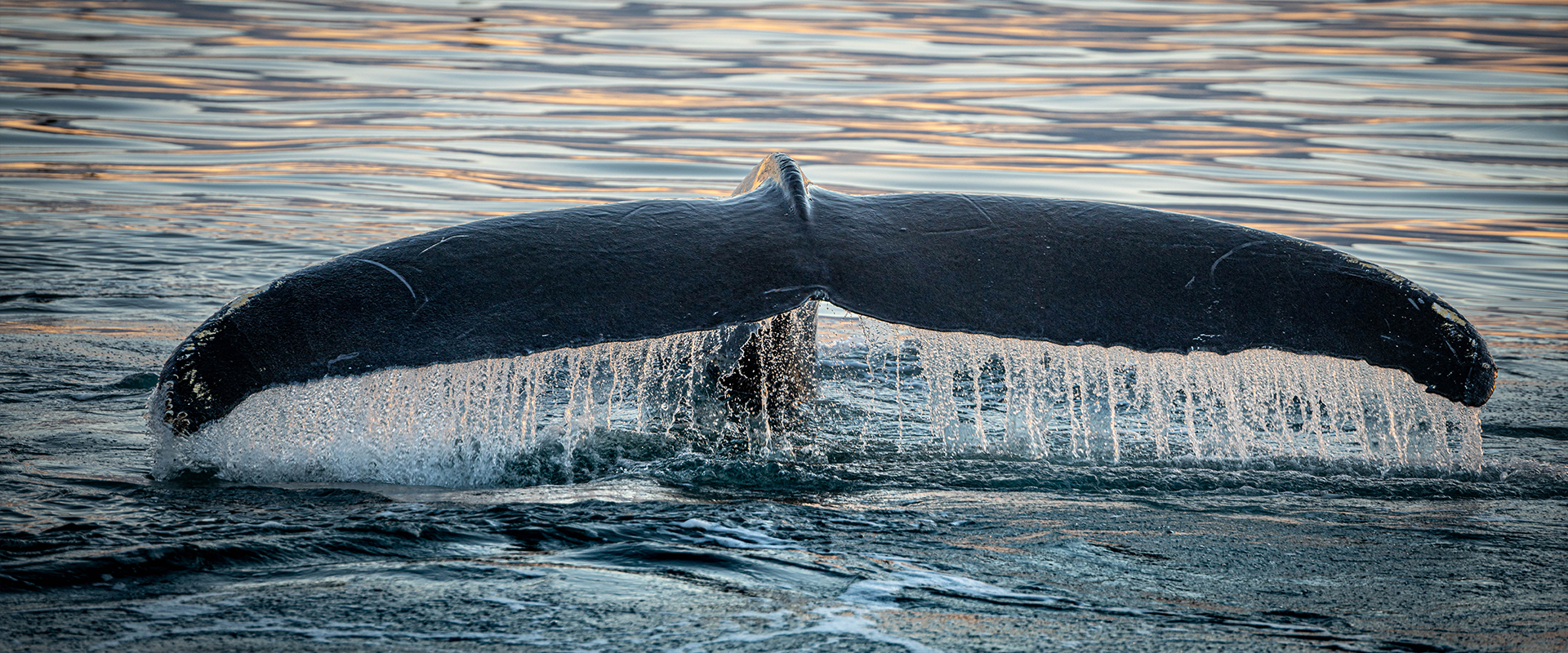
WHALES
The Largest Animals in the World
BASIC INFORMATION
Whales in Svalbard arrive in spring and stay through summer. They embark on such a long journey north because during this time, the waters of the archipelago are rich in food. When the polar night ends and the rays of the sun begin to warm the ice, ideal microclimate forms beneath it, facilitating the growth of algae, microorganisms, and consequently, invertebrates, including the most crucial one: krill. Krill is a fundamental element in the food chain, and despite its small size (thumb-sized), its abundance makes it the most valuable food for the largest marine mammals, including the blue whale.
Krill is hard to spot from the deck of a yacht, but sometimes, when filming whales from a drone, we see massive pink patches on the water created by thousands of these creatures. According to statistics from the Norwegian Polar Institute, there has been an increase in the number of humpback and blue whales in Svalbard in recent years.
The whales we encounter on Svalbard
The blue whale is the largest animal ever to have existed on Earth. It reaches the length of up to 32 meters and can weigh 150 tonnes, exhibiting sexual dimorphism, with females being larger than males. To grasp the enormity of a blue whale, one must know that its tongue alone weighs as much as an elephant. The blue whale feeds exclusively on krill, consuming around 4 tonnes per day. During our expeditions, we have had several opportunities to admire closely the blue whale, each time marvelling at its size.
The humpback whale is a fascinating species from the baleen family. Adult individuals usually reach the lengths of 14–17 meters and weigh between 30 and 45 tonnes. They are among the largest rorquals in the world. Humpbacks have long, narrow pectoral fins. Their upper body is usually black, while the underside is white, giving them a distinctive appearance. Their beautiful tail fins, with black-and-white patterns unique to each individual, are also a characteristic feature. Humpbacks are renowned for producing beautiful songs underwater. The melodies are diverse and complex. The songs are still the subject of scientific research, but they are likely associated with communication among them. Humpbacks are not only beautiful but also intelligent.
The fin whale, the second-largest animal on Earth, reaches the lengths of up to 27 meters and can weigh up to 90 tonnes. Similarly to its blue whale relative, females are larger than males. The fin whale has long, pointed fins, a white belly, and a gray and black back. Its distinctive asymmetrical colouring includes a dark gray left lower jaw and a white right lower jaw. The head constitutes almost a quarter of the body length. Fin whales are frequently spotted on Svalbard.
The minke whale is the smallest of the baleen whales. It reaches the lengths of up to 9 meters and weighs up to 2.7 tonnes. The dark grey back transitions to a lighter abdomen on the sides. Males exhibit zigzag, light stripes behind the head along the back. The tail fin is wide and ends in two pointed tips, with the dorsal fin rising from the rear half of the back and having a slightly crescent shape. Minke whales are still subject to Norwegian hunts.
The Arctic beluga whale, due to its colour, is one of the most distinctive whales. It is small, reaching the lengths of 3–4.5 meters and weighing up to 1.6 tons. It feeds on fish, crustaceans, and cephalopods. Belugas are social animals, moving in groups of several individuals. Although they are very shy and rarely allow close approach, we often see them entering fjords, especially those ending with glaciers. Blocks of ice breaking off and hitting the bottom stir up the water, bringing the belugas’ sought-after food to the surface.
Orcas, although listed in the Svalbard animals atlas, have never been observed by us in this area. Fortunately, we compensate for this during our winter expeditions, “Auroras and Whales,” where almost every day, we have the opportunity to sail among their pods.
Trips connected with WHALES
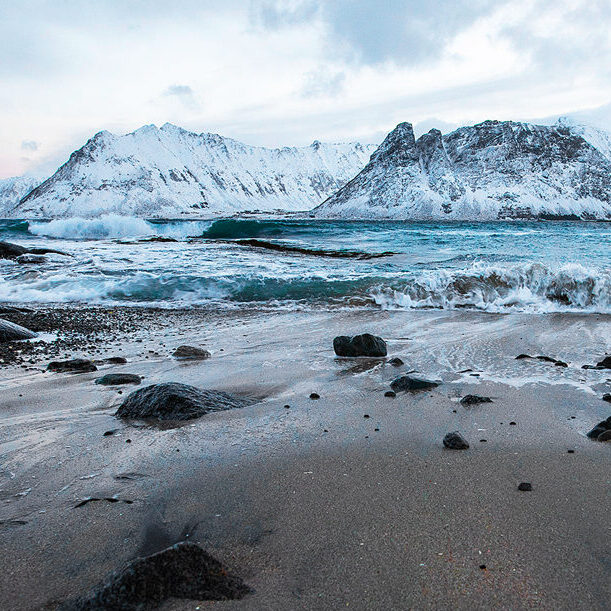
Arctic Ocean Expedition

15 dni
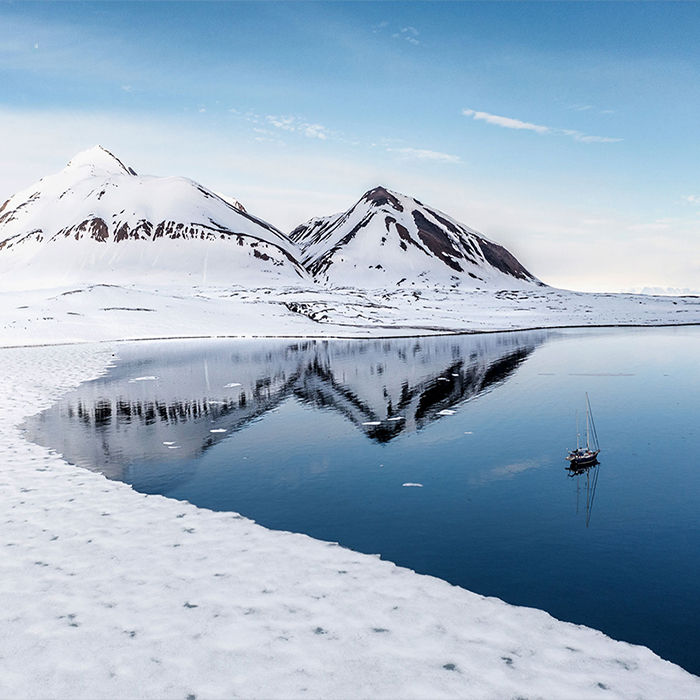
Across the Arctic Seas

12 dni
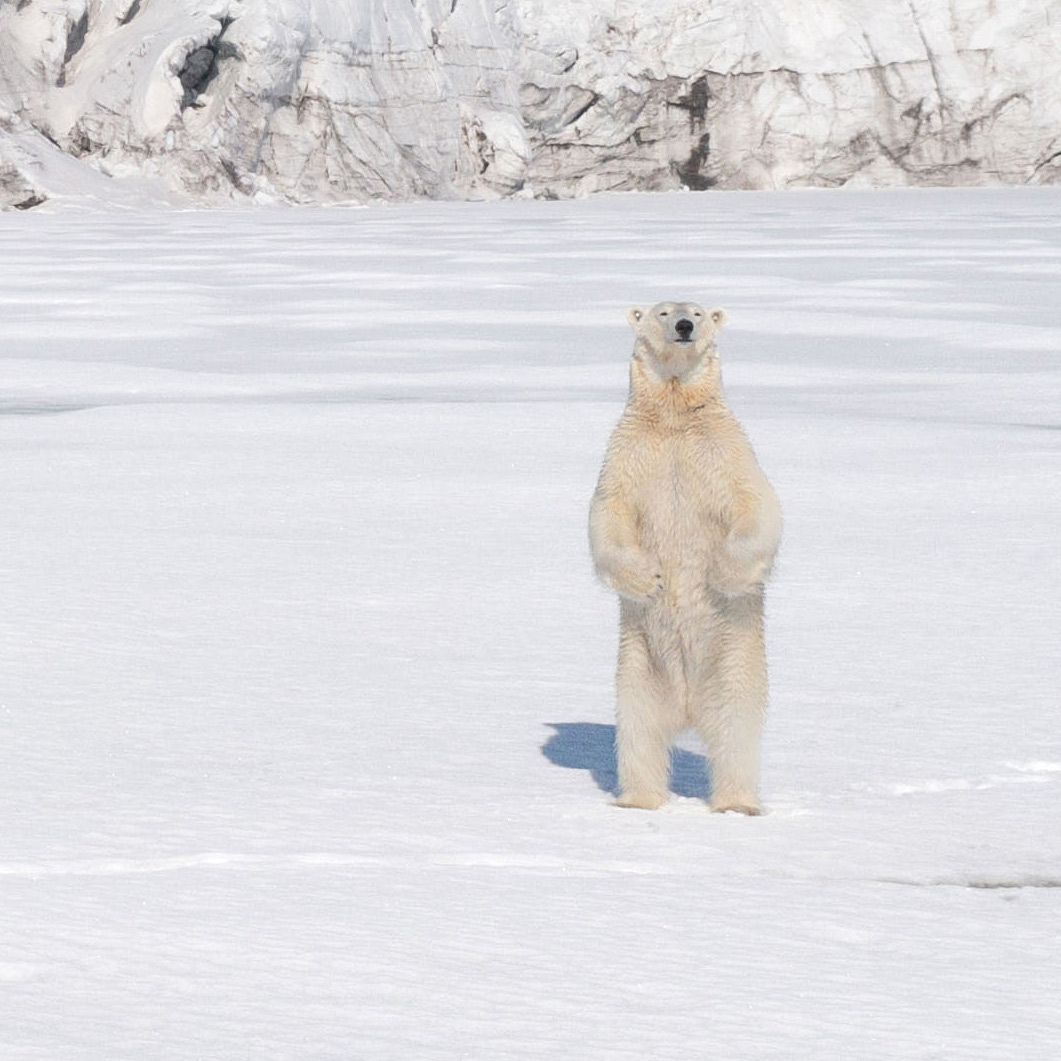
Animals of Svalbard Photo Safari #1

8 dni

Animals of Svalbard Photo Safari #2

8 dni

Animals of Svalbard Photo Safari #3

8 dni
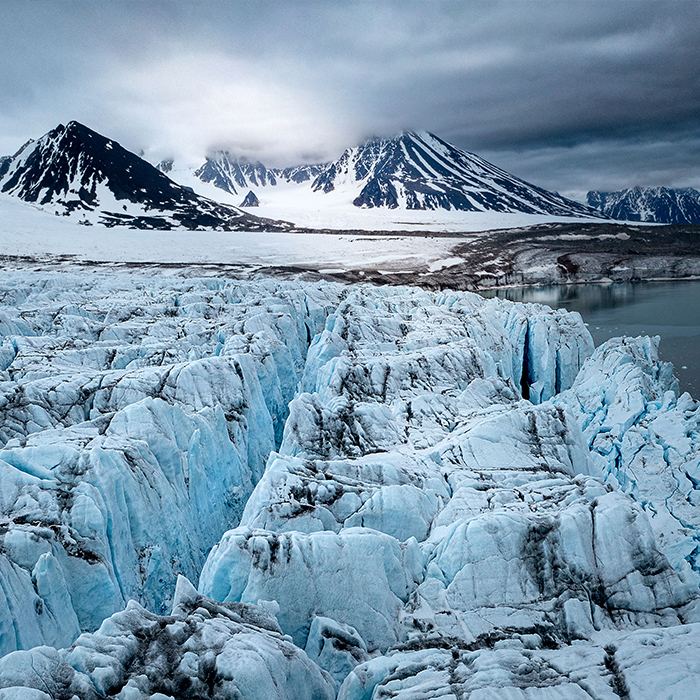
To the Edge of the North #1

10 dni

To the Edge of the North #2

10 dni

To the Edge of the North #4

10 dni
